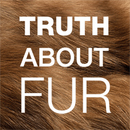The Great Fur Burial, Part 3: After Six Months
by Truth About Fur, voice of the North American fur tradeThe fur industry is proud of the many ways in which fur is eco-friendly, including that after decades of use, it biodegrades. In…
Read More

The fur industry is proud of the many ways in which fur is eco-friendly, including that after decades of use, it biodegrades. In…
Read More
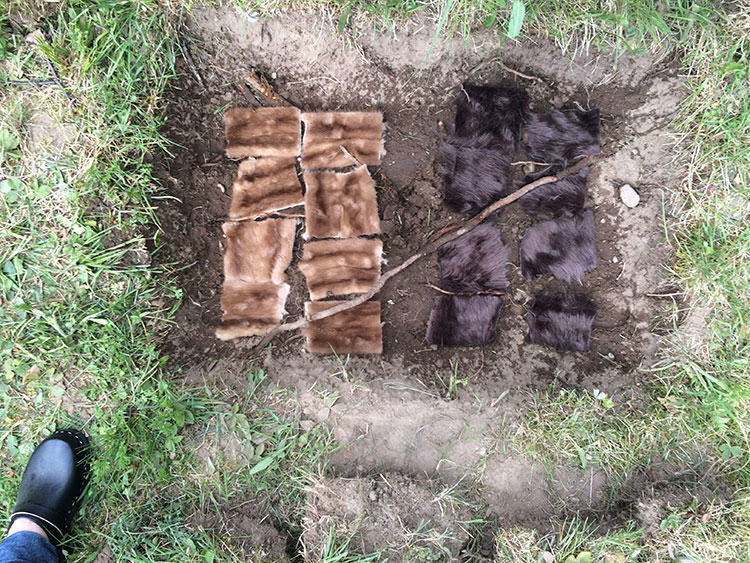
The fur industry is proud of the many ways in which fur is eco-friendly, including that after decades of use, it biodegrades. In contrast, when fake fur made from petrochemicals reaches the end of its useful, and typically very short, life, it goes in a landfill where it will sit until the end of time. Or will it? In pursuit of knowledge and truth, we decided to do a little experiment: the Great Fur Burial.
On May 14, we took a mink stole and a fake fur vest, cut them into equal-sized pieces, and buried them. Above is how the pieces looked on burial day. The plan was that after 3 months, 6 months, and then once a year for five years, we would unearth two pieces of the mink and fake fur to compare degradation rates. This experiment is hardly scientific, but it only has to show one thing: do they rot, or not?
Two weeks ago we unearthed another set of fur pieces. Our burial spot is marked by red sticks.

The synthetic fur was easy to find (left), whereas we had to be a lot more careful unearthing the real fur (right) as the pieces appeared to be much more delicate.
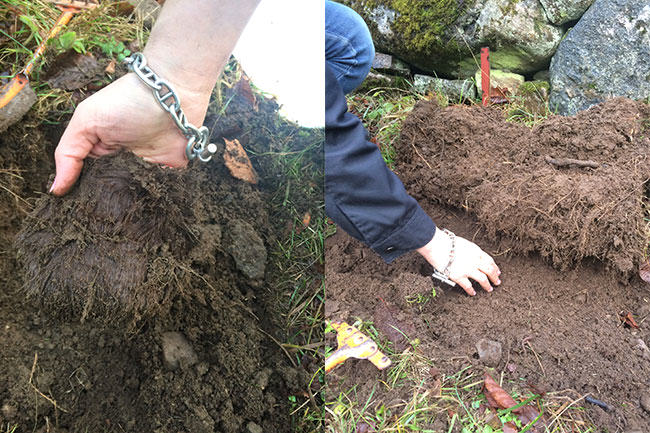
Once the fur pieces were out of the ground, they were placed, as is, on a tray. The real fur piece is on the left and the fake fur is on the right. As you can see, the real fur sample is much smaller than the fake sample, and not because of degradation. It seems the real fur sample must have been made of two pieces sewn together. The stitching rotted, and we ended up exhuming only one half.
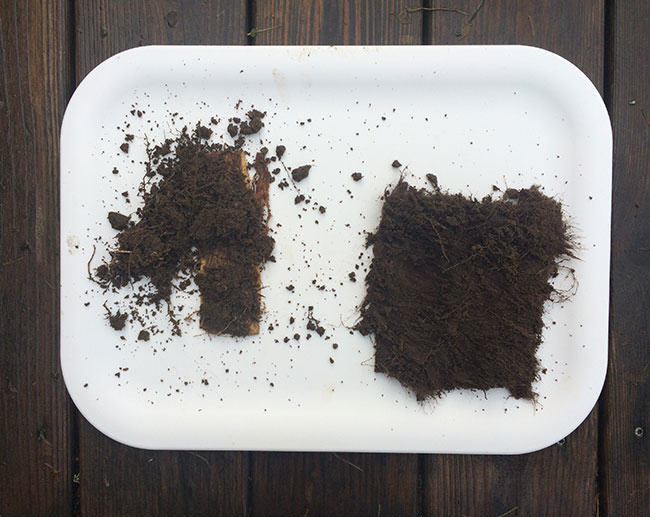
We gently shook some dirt off each piece but as the mud was really encrusted in the fur, we decided to let the samples dry for two weeks so we could clean them without causing damage.

Two weeks later the dirt was dry and we gently shook off as much of it as possible, without having to rub the samples too much. It is quite obvious, looking at the photo below, that the real fur (left) has disintegrated a lot more than the synthetic. The synthetic fur (right) looks pretty much intact, whereas the majority of the hairs of the real fur seem to have disappeared. The leather is frail and the only parts of the real fur sample that seem to be in decent condition are the threads.
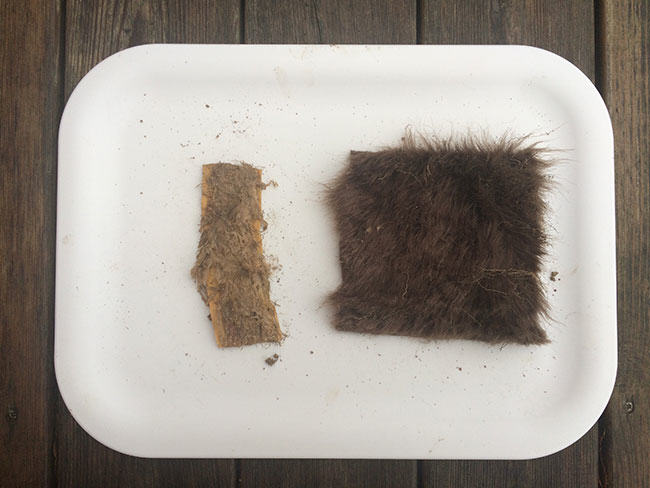
This photo shows the backs of the samples, and it is obvious that the real fur is in much worse condition than the synthetic fur.
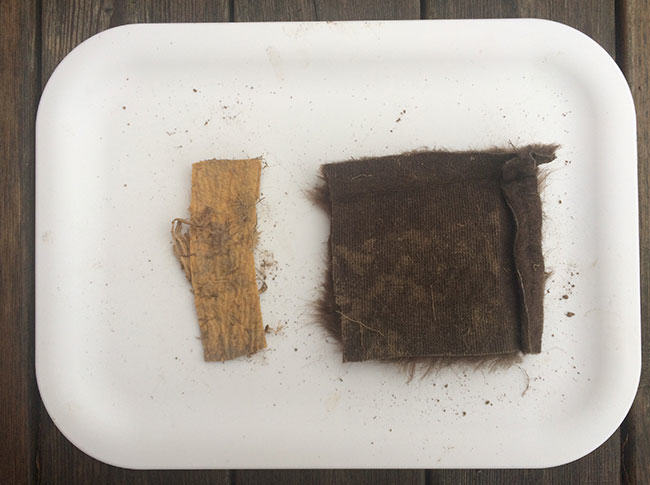
Let's look at the real fur, close up. The hairs are practically gone and the leather is frail. The sample is disintegrating.
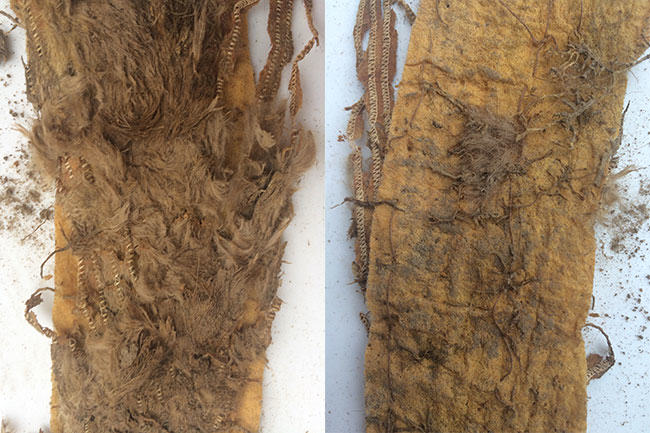
In contrast, the synthetic fur, below, still looks practically intact. The hairs are still soft and the backing shows very little change since it was buried. It is hard to imagine any dramatic change happening between now and our next exhumation a year from now, so it's looking like the story is true: fake fur can sit in a landfill for hundreds of years.
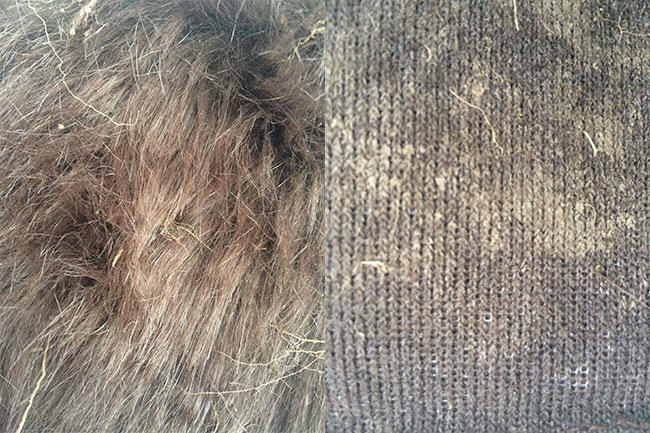
Equal-sized pieces of real and fake fur were buried side by side. After six months, the fake fur showed no obvious signs of degradation, biological or otherwise. In other words, it was almost perfectly intact. The real fur, however, was in an advanced state of degradation, with the hairs reduced to a few fine wisps, and the leather frail and delicate.
Like all good scientists, we’ll hold back on making conclusions until the experiment has run its course. But the way things are headed, it might not be long before we’re using tweezers and a magnifying glass to find a real fur sample. It will all then be down to the fake fur samples. Will they degrade in five years? Or by the end of time?
Read the other installments of this experiment:
The Great Fur Burial, Part 1: Burial
The Great Fur Burial, Part 2: After Three Months
The Great Fur Burial, Part 4: After One Year
SEE ALSO: New study compares natural and fake fur biodegradability. Conducted by Organic Waste Systems, Ghent, Belgium; commissioned by the International Fur Federation and Fur Europe, 2018.
I recently sat in on a conservation meeting in a sportsmen’s lodge outside Concord, New Hampshire. The topic for discussion…
Read More

I recently sat in on a conservation meeting in a sportsmen’s lodge outside Concord, New Hampshire. The topic for discussion was the lack of camaraderie amongst sportsmen and women, and the toll this has taken on conservation and wildlife programs throughout the state and region. One man said his piece on what was wrong with the current state of hunting and trapping across America. “I’m going to say something that may offend some of you," he cautioned us, "but it needs to be said. Sportsmen groups are one of the most unorganized groups of people in the country.” There wasn’t a single rebuttal from anyone in attendance; everyone knew full well what he meant, and furthermore, what it means for the future of consumptive outdoor activities in the region and the country.
It’s a subject that not too many hunters and anglers recognize, or want to admit, but those of us in more “niche” activities like hound hunting and fur trapping know it all too well. Let’s face it, you may be a big-time duck hunter and passionate about your sport, but when a bill comes before your state legislature to restrict or ban bear hunting, are you as a duck hunter, going to take the time to write to your representative to save bear hunting when you know full well you’ll never hunt bear? I’m guessing the answer, nine times out of ten, would be “no”, and that's one of the reasons why consumptive outdoorsmen and women are constantly under scrutiny from anti-hunting and anti-consumptive organizations nationwide.
Decades ago this type of mindset was unheard of. If you hunted deer, chances were you also dropped a line in the creek for trout and trapped muskrats along the marshlands during duck season. In many states and provinces, this way of life still prevails as larger populations of rural folks hold tight to their outdoor self-reliant roots. But for many of us, the community of consumptive sportsmen has become fragmented. We are passionate about our own particular practices, but fail to recognize hunting, fishing and trapping as an all-encompassing benefit to conservation and outdoor recreation.
Now I know there are plenty of you reading this and wondering what I’m talking about, thinking that it's only common sense to support all forms of hunting, trapping and angling. Unfortunately nowadays, your train of thought is in the minority, and this concept is seldom heard when the proverbial deer piss hits the fan.
Yes, we should support and commend one another for having the common sense to want this natural world managed and regulated as a resource for all consumptive practices. However, every state and province in North America has divisions within its hunting ranks. Many bird hunters don’t care for trappers; many deer hunters don’t care for hounds-men; many anglers don’t care for hunters. These divisions rise to the surface every fall, and sometimes disputes over wildlife management spill into clubs and departments, causing greater divides and offshoots.
When a bill or piece of legislation does come along threatening the current ways of hunting and trapping, it's usually only those whose hides get affected (pun intended) that spend time voicing opposition.
Meanwhile, the animal rights groups and “hands-off" environmentalists have a field day presenting themselves as the majority, when in reality this is clearly not the case.
So what exactly am I asking for? Am I seriously trying to convince every New Hampshire deer and pheasant hunter to show up at the next hearing on anti-trapping legislation? Well, frankly, in a perfect world that’s what I’d like to see, and I recall a time when that would not have been an outlandish request.
What I will realistically settle for is for all of you to join your local sportsmen’s group - not your local skeet club or shooting range, but your state organization dedicated to preserving hunting, fishing, and trapping for everyone. The Sportsmen’s Alliance for instance, is a national organization that champions such values. This group serves as a lookout to protect deer hunters and bass fishermen, as well as fur trappers, hound hunters, and turkey callers. While national groups like the Sportsmen's Alliance do an excellent job, we must also support one another at the state and regional levels. Almost every state and province has some kind of consumptive sportsmen’s group; Maine has SAM, New Hampshire has the NH Wildlife Federation, and so on from Vermont to California. These groups not only support all major forms of regulated hunting and fishing, but also serve as a bridge of unity between the different classes of these outdoor activities.

When each of you took your hunting or trapping education classes, you learned about concepts like carrying capacity, wildlife management and conservation. I can tell you the Primos hunting decal on the back of your F-250 doesn’t mean a thing if you don’t support the other aspects of conservation that go along with its meaning. It really doesn’t matter how much you spent on your duck blind, or which Pro-Staff you belong to - if you aren’t willing to recognize and support the other aspects of wildlife conservation, such as fur trapping and bear hunting, your Real-Tree camo pajamas are nothing more than a fashion statement. More than 90 million U.S. residents (16 years old and above) participated in some form of wildlife-related recreation in 2011. With numbers like this, it’s a downright embarrassment that we must constantly fight to keep trapping and hunting relevant today.
Despite what anti-hunting activists may say or think, I know lack of support for these “niche” activities isn’t due to lack of individual sympathy for the cause, but rather a lack of motivation to see the fight through. This is where we all, as outdoorsmen and women, must stand together against those who wish to abolish all forms of hunting and fishing. If you don’t believe your brand of outdoor hunting could be targeted, take a look at the current headlines to get a snapshot of how anti-hunting groups deceitfully operate. They know how difficult it is to push a man off his stool. They know it's much easier to whittle away at each supporting leg of that stool when he’s not looking, and watch him fall on his ass in sheer shock and surprise!
Keep in mind these organizations don’t protest hunting and attempt law changes on principle. Their primary motivation is donations. Take a look at any of the anti-hunting groups like HSUS, PETA and Furbearer Defenders, and you’ll see their websites plastered with “donate-now” buttons. They parade state-to-state crying injustice, corruption and animal cruelty while soliciting for donations. Once the deed is done, and they’ve won the argument, they’re on to the next state to suck the life out of their outdoor conservation groups. The wildlife these groups claim to support end up suffering in their wake as they continue to follow the money. Its common knowledge that most of the people who speak against hunting at these state hearings are paid to be there – it’s much more motivating to “save the animals” when you’re collecting a large paycheck in the process. But instead of standing and fighting these anti-hunting groups, sportsmen are busy pushing their neighbors under the bus in the hope these groups will move on if trapping and bear hunting are banned. This is a huge mistake, as even the most basic research on these groups will show this is not their end game. Staten Island is already experimenting with controlling its deer population by castrating bucks rather than allowing hunting; it’s happening right in front of your eyes and I’m sorry to say the “Redneck pride” sticker on the back of your truck isn’t going to stop it.
It’s not all doom and gloom; there is a light at the end of this ever-growing tunnel. You can start by becoming an active member of your local sportsmen’s club and keeping an ear to the wall for anti-hunting and trapping legislation. Find out who your local district and state representatives are and let them know you are a hunter or trapper. Whether they’re Democrat or Republican, conservative or liberal, most representatives listen to what their constituents are saying. Sending a handwritten letter introducing yourself and your outdoor activities is a good start to breaking the ice before legislation is introduced. It doesn’t take a lot of time either - I work a full time job, maintain and run a pro-trapping website for free, and take an active role in my local conservation groups with time still left over to hunt and trap!
To summarize, whether you hunt to put venison in the freezer, fish for sport, bird hunt with dogs or set traps for natural fur garments, you are an integral part of the North American Model of Wildlife Conservation. Your support is needed as our society is overcome by tablets, smart-phones, self-driving cars and Kardashians. Our self-reliant ways of life are ALL in jeopardy as habitat loss and out-of-touch citizens continue to constrain and restrict our activities. It’s time we start pushing back and regain our freedoms as fixtures of the natural world. United We Stand, Divided We All Fall.

FOLLOW JEFF TRAYNOR'S "LIVE FREE AND TRAP" ON:




The world is changing and, with it, our approach to consumption. As the impact of global warming worsens, many consumers…
Read More
The world is changing and, with it, our approach to consumption. As the impact of global warming worsens, many consumers are rethinking what they buy, and how much of it. "Local", "organic" and "minimalism" are all buzzwords many of us are drawn to, and some people question the need to eat animals, or wear leather and fur. Where does that leave us with animal use?
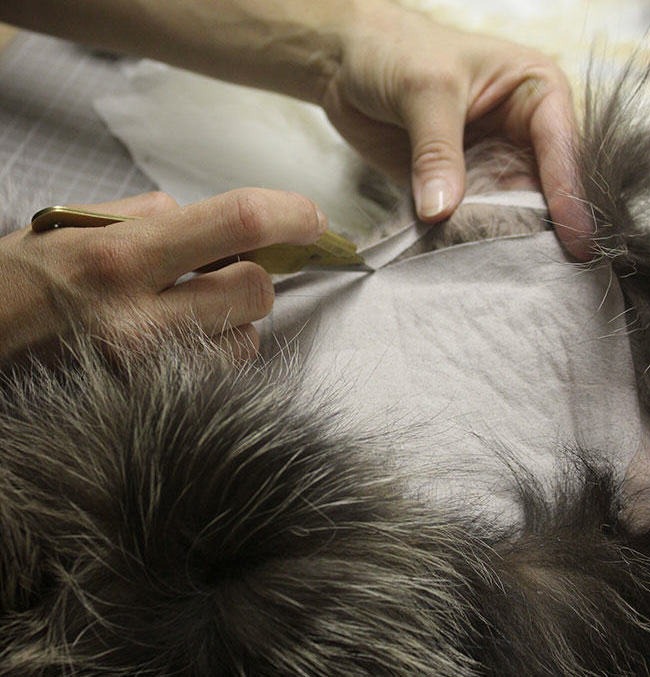
The use of animals is an ethical dilemma that many people question, but most people agree that if animals are well-treated, they are not in danger of becoming extinct, none of the animal is wasted, and the animal is put to good use, then it is acceptable for us to use and consume them.
SEE ALSO: WHY FUR IS THE ETHICAL CLOTHING CHOICE
Animal use is an integral part of many people’s lives, and is linked to essential products in our everyday life, such as medication, food, and clothing. Animals are used in medical testing in order to find cures to life-threatening diseases. We eat animals and while some people question the need to do this, there is plenty of evidence it can be done without harm to our planet. In fact, lots of land is better suited for pasture than for cultivation. And remember that animal manure is used to replenish the soil to grow crops. But if we are concerned about possible impacts, a small reduction in the amount of meat we consume – and waste – can go a long way. And lastly, we wear many types of animal products in order to protect ourselves from the elements. Fashion may not be essential, but clothing is. The need to keep warm in cold weather is a matter of life and death.
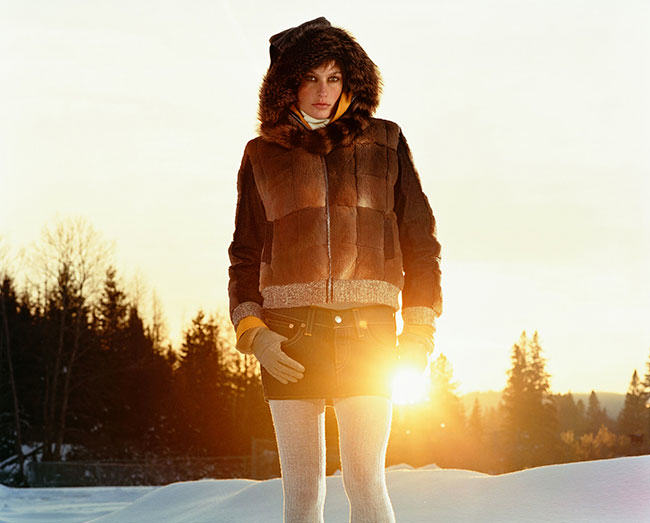
If you live in a cold country, you’ll need clothing that can protect you from the elements, and your choices should involve leather, fur, and other animal products. Why? Because there are no viable alternatives.
If we really care about the environment (and we all should because nothing else matters if we don't have water and food and clean air), we will want to buy sustainable fashion products that use production processes that are not too harmful to the environment, that are long-lasting, and that are biodegradable. That is exactly what animal skins are. Yes, they aren’t perfect; leathers and furs use chemicals in their processing and finishing (like all other textiles), and sometimes the farming has an environmental impact. But when you consider how long a good fur coat or high-quality leather bag lasts, you’ll realize that the environmental damage is minimal compared to the lifespan of the item.
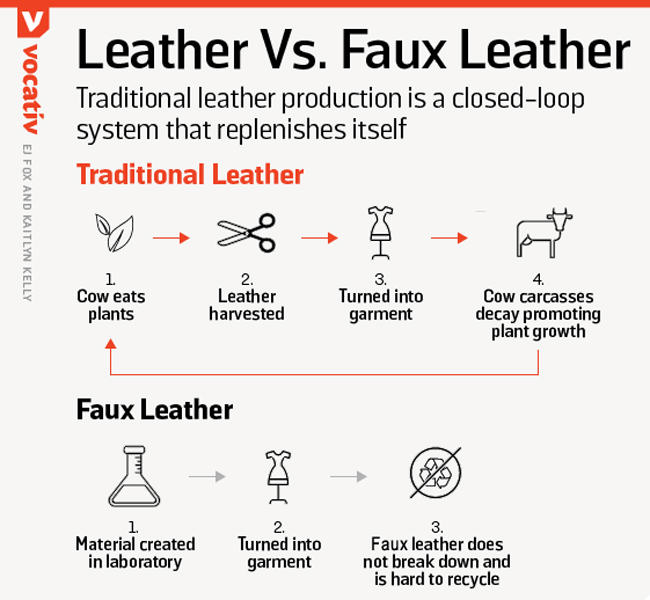
So here they are, the five reasons why we must all wear leather and fur, and these reasons all point to the fact that there are simply no viable alternatives.
1. There are no alternatives that are biodegradable. The synthetic alternatives to fur and leather take much longer to biodegrade (50 years for treated leather vs. 500+ years for pleather), and even when they have “biodegraded”, there are still remains of the plastic particles in the soil, which we are now finding in our oceans and inside fish. Truth About Fur is in the process of conducting an experiment to prove that real fur biodegrades much faster than “faux”, and the results are more dramatic than even we expected.
2. There are no alternatives that are sustainable. Synthetics are made from petroleum by-products. You probably know that petroleum is not a renewable resource. The problems caused by the extraction and transport of petroleum are only a part of the issue, let’s not get started on the political issues (read: wars) that are caused by petroleum. Animals are a renewable, sustainable resource. (Actually, wool, down, and cashmere and other similar materials are sustainable, so these are certainly viable alternatives when it comes to winter coats. But the animal rights activists are against those, too, since they come from animals. Usually a sensible winter wardrobe would combine fur, leather, down, wool, and cashmere – you’ll never be cold.)
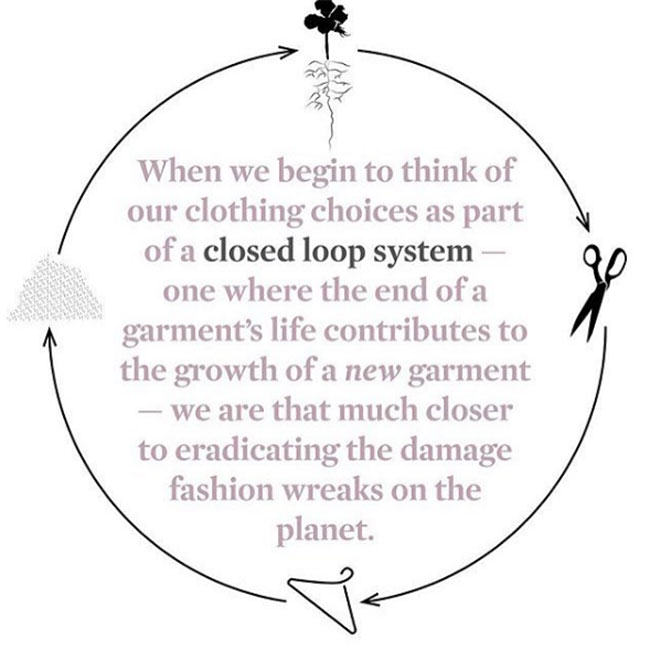
3. There are no alternatives that are as long-lasting. While a fake fur or leather jacket may be sitting in a landfill for a few hundred years longer than its real counterpart, that doesn't mean it is longer lasting in a fashion perspective. When well cared for, fur and leather items can last for decades, but fake leather and fur hardly do the same. Both look worn out much faster (and not in a cool way – like worn out leather), and they also don't maintain their warmth or waterproof qualities. You don’t find many fake leather bags being handed down from one generation to the next, do you?
4. There are no alternatives that are as environment-friendly. The points above do a good job of making this argument, but we can add to this by talking about the processing. Yes, leather and fur require chemicals for processing (leather requiring more than fur as you need to remove the hairs from leather, whereas with fur you are aiming to protect them). But two important things to consider here are that (1) the chemicals used to “dress” furs are really quite benign, e.g., alum salts (which are sold in the pharmacy to add to your bath water for sore muscles), and (2), the longevity of leather and fur items means that the chemicals per wear are much less than a synthetic alternative. Your leather bag or fur coat may have used chemicals in its production, but the fact that it lasts you 30 years makes it a more environment-friendly option than the synthetic version, made from a non-renewable resource that requires chemicals in its processing, which then looks tatty after two seasons. Another important thing to consider is that no synthetic material looks good in its natural state, while fur is frequently used in its natural state (meaning its natural colours), reducing the need for bleaches and dyes.
5. There are no alternatives that are as safe. We’ve yet to fully understand the bodily harm coming from wearing synthetics, but there’s a great deal of research that shows that synthetic materials may contribute to health issues such as infertility, respiratory diseases, and cancer. Why take the risk when there are natural alternatives?
If you truly care about the planet and its inhabitants, you’ll make consumption decisions based on what’s best for us all. You might refuse to eat animals or watch them being used as entertainment, but it is impossible to deny that synthetic clothing is causing irreparable harm to our planet. Choose materials that are sustainable, long-lasting, and biodegradable. Choose fur and leather because there are no viable alternatives.
***
To learn more about donating to Truth About Fur, click here.
A recent on-line, anti-trapping rant by Born Free USA boss Adam Roberts (“What kind of person still traps wild animals?”, Huffington Post,…
Read More
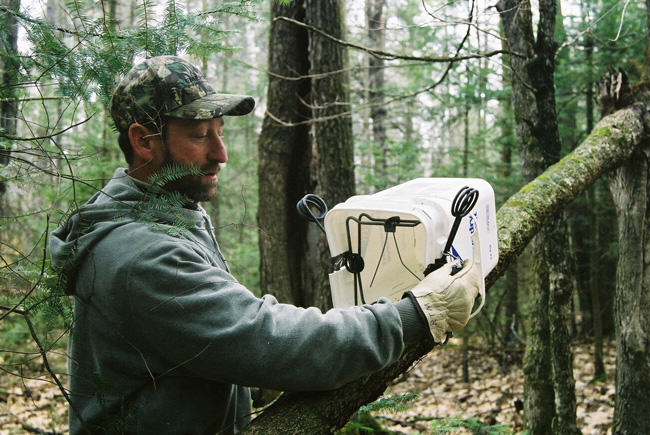
A recent on-line, anti-trapping rant by Born Free USA boss Adam Roberts ("What kind of person still traps wild animals?", Huffington Post, Sept. 7, 2016) underscores how trappers are on the front line in the war against humans using animals – a war in which the weapons of choice are misleading images, inflammatory rhetoric, and exploiting the information gap between rural and urban cultures.
Roberts' attack drives home how important it is to explain, again and again, the vital role trappers play in responsible wildlife management and conservation.
Like other "animal-rights" groups, the folks at Born Free rage against a wide range of animal-use activities. This time, as part of their "Victims of Vanity 2" campaign, they are promoting an “undercover” trap-line video showing “atrocities” that they claim “occur regularly across America”.
“What kind of person purposely destroys a beaver dam and sets a ‘wall of death’ of Conibear traps," asks Roberts, "knowing that the unsuspecting beavers will return to repair their handiwork – only to be possibly smashed across their abdomens and drowned?”
The insinuation is that such traps cause terrible suffering. Born Free's own video, however, shows beavers that have clearly been struck by the trap bar across the back of the neck, breaking cervical vertebrae and causing rapid death, just as this quick-killing trap is intended to do. These traps were developed through several decades of (on-going) scientific research to provide the most humane possible methods for controlling wildlife populations.
North America’s world-leading humane-trap research program has provided the scientific basis for comprehensive state and provincial trapping regulations, trapper-training programs, ISO standards, Best Management Practices, and the Agreement on International Humane Trapping Standards.
SEE ALSO: Neil Jotham: A life dedicated to humane trapping
Thanks to this pioneering work, the time-to-death produced by quick-killing traps like those shown in Born Free's video is now measured in seconds. Roberts knows, however, that most of his readers live in cities and have little real contact with nature. People who find their meat neatly wrapped in cellophane on grocery store counters are easily shocked by pictures of dead animals, no matter how humanely they were euthanized – especially when cued with sufficiently emotional rhetoric.

Similarly, the live-holding devices used for capturing larger predators – like the coyote shown in Born Free's video – are not diabolical instruments of “torture”. Modern, live-holding foot traps are used by wildlife biologists to capture and release – unharmed – wolves, lynx, river otters and other animals for radio-collaring or reintroduction into regions where they were previously extirpated. To claim, as Roberts does, that such traps “have remained relatively unchanged for 400 years” is nonsense.
But what about the bigger question Roberts implicitly raises: should we really be killing wild animals at all?
In fact, there are many reasons why wildlife populations often must be managed. Overpopulated beavers can completely “eat out” vegetation in their region; the population will then crash and there may be no beavers at all for many years. Regulated trapping can smooth out these boom-and-bust cycles, maintaining healthier and more stable beaver populations. This is one reason why biologists believe there are now as many beavers in North America as there have ever been. There can, however, be too much of a good thing: beaver dams in the wrong places can flood roads, fields, and forest habitat. When your basement (driveway, back yard) is flooded, who’re ya gonna call: Mr. Roberts ... or your local trappers’ association?
Meanwhile, coyotes are the number-one predator problem for sheep and cattle ranchers, and many states and provinces have been obliged to offer bounties to keep their populations in check. Coyote, fox and raccoon populations are also culled to protect endangered ground-nesting birds or sea-turtle eggs. Overpopulated foxes, skunks and raccoons are prime vectors for rabies and other diseases that can be transmitted to humans and pets. For these and many other reasons, there will always be a need for trapping, whether or not anyone buys fur. Without a market for fur, however, these management efforts would be paid for by the government – i.e., by tax-payers – as they now are in many parts of Europe.
SEE ALSO: Why fur is the ethical clothing choice
Trappers protect nature in other ways that are not often publicly recognized. While we all “care” about nature, most of us now live in cities. Trappers are our eyes and ears on the land, sounding the alarm when nature is threatened by inappropriate resource extraction or industrial activity. Trappers' associations across North America are on the front lines to ensure that forestry practices respect the needs of wildlife, for example by leaving a swath of uncut trees along watercourses. And, like the canary in the mine, trappers are the first to spot changes such as reduced reproduction rates among mink that may signal industrial pollution upstream. Harvesting data, including the sex and age distribution trends, provide vital information about the health of our wildlife populations.
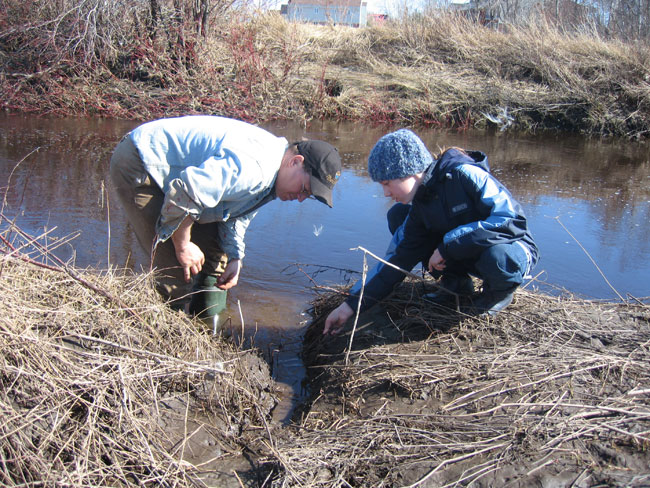
Most important of all, nature is not a museum. Most wildlife species produce more young each year than their habitat can support to maturity. The ones that don’t survive feed those that do. We are part of nature and we too can make use of the surpluses that nature produces – year after year, generation after generation – so long as we protect the habitats and ecosystems that provide those surpluses. This is called “the sustainable use of renewable natural resources”, a central conservation principle promoted by the International Union for Conservation of Nature (IUCN) and other conservation authorities. (By contrast, the synthetic materials that animal activists would have us wear are usually derived from petroleum, a non-renewable resource.)
Does all this give us the right to abuse animals? Absolutely not.
The Born Free video also shows a trapped coyote being kicked, prompting Roberts to ask, "What kind of person watches a tethered and helpless coyote writhe in pain and distress, unable to move because of the intensely unforgiving steel jaws clamped to her paw, kicks her in the side, and then finally shoots her in the chest so that her lungs fill with blood, and she dies a miserable, suffocating death?"
Most trappers would be disgusted by this scene. There is no excuse for kicking an animal, ever. Furthermore – Roberts' "intensely unforgiving" rhetoric aside – every trappers' association and trapper-training manual teaches that live-trapped animals should be killed quickly and humanely with a direct shot to the head. But this completely unacceptable behavior of one individual does not give Roberts or Born Free the right to smear the reputations of more than 200,000 North American trappers.
On the contrary, as society becomes more interested in protecting our natural environment, it is time that we learn more about these remarkable and knowledgeable men and women – the small minority among us who continue to live close to the land.
What kind of person still traps today? Far from the grotesque caricatures that animal activists like to portray, in many real and practical ways, today’s trappers are the true guardians of nature.
COOL FACT #1: Fur may have saved the human race New research suggests humans (Homo sapiens) survived the last Ice…
Read More

New research suggests humans (Homo sapiens) survived the last Ice Age and Neanderthals didn’t because humans were serious about fur clothing. Animal remains around Neanderthal sites lack evidence of furbearers, while human sites have fox, rabbit, mink and notably wolverine - the same fur still preferred today by Canadian First Nations for hood liners.
In the early 19th century, trappers came from far and wide to the US west coast to harvest huge populations of furbearers. It was these trappers, not the gold prospectors who followed, who opened up the west and put San Francisco Bay on the trade map. But no one remembers because no one named a football team after them. Go 49ers!

Next time you see the words "natural flavouring" on a food package, it might be referring to Castoreum, secreted from the castor sacs of beavers located between the tail and the anus. Usually it's used to simulate vanilla, but it can also pass as raspberry or strawberry.
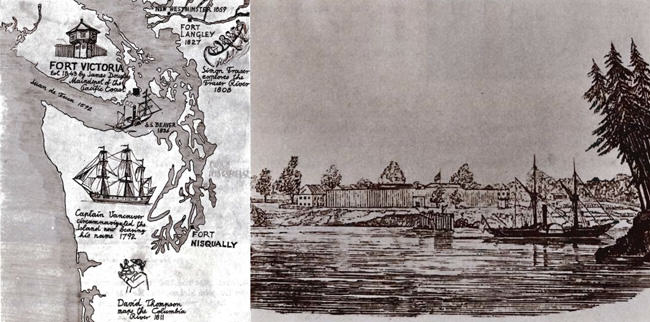
The search for fur drove Europe's exploration and settlement of North America, and many of today's towns and cities began as fur-trading posts. In fact, much of the border between Canada and the US traces the territories once controlled by Jacob Astor’s American Fur Company and the Montreal-based North West Company.
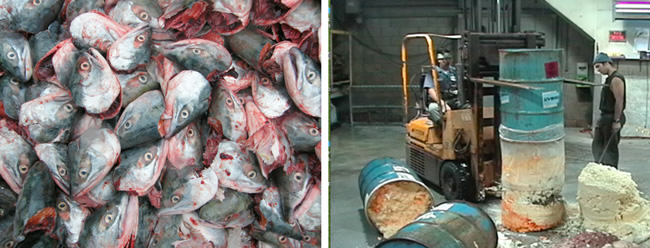
Have you ever wondered where all the animal leftovers from human food production go? Fish heads, chicken feet, expired eggs, spoiled cheeses? If you live in fur-farming country, chances are they go to make nutritious mink food. And the mink manure, soiled straw bedding and carcasses are composted to produce organic fertiliser to enrich the soil, completing the nutrient cycle to produce more food.
In Nova Scotia, Canada, pilot projects are transforming mink wastes into methane for bio-energy production. In Aarhus, Denmark – the country that produces the largest number of farmed mink – the public transit buses already run on mink oil.
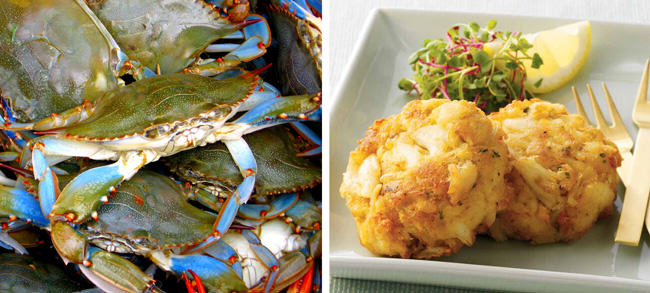
Crabs will eat just about any seafood you offer them, but so will seals and sea lions, and they'll trash your crab pots to get at it. Enter mink bait! Crabs find their food by smell, and apparently the smellier the better because they love mink musk. But seals and sea lions can't stand it and will give your pots a wide berth!
The national animal of Canada has been prized for its luxuriant fur for hundreds of years, yet wildlife biologists believe there are as many today as there were before Europeans arrived. They also believe coyotes, foxes and raccoons are more populous now than ever. Truly modern trapping, regulated to allow only the removal of nature's surplus, is a perfect example of the sustainable use of renewable natural resources!
SEE ALSO: Abundant furbearers: An environmental success story.
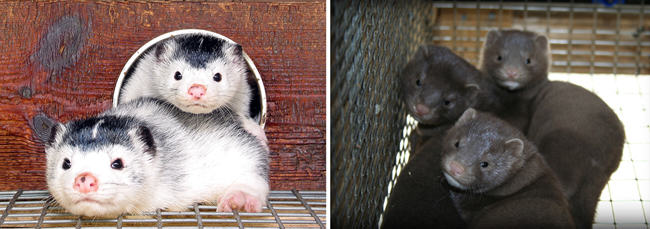
After being weaned from their mothers, farmed mink are often raised in pairs, preferably a brother and sister, and sometimes even threes. Farmers have learned that keeping siblings together results in calmer and healthier mink.

Fur garments are created individually, with all the cutting and sewing done by hand. Not counting all the work involved in producing the pelts, an “average” mink coat might take 35-40 hours of hand work, while an intarsia sheared beaver by Zuki could take 100 hours. That's longer than it now takes to assemble a car!
Each year, North Americans use about 7 million animals for fur. That's one sixteenth of one percent of the 12 billion animals they use for food. Yet animal activists focus more attention on the fur trade than on all other livestock industries combined. Go figure!
The fur industry is proud of the many ways in which fur is eco-friendly, including that after decades of use, it biodegrades. In…
Read More

The fur industry is proud of the many ways in which fur is eco-friendly, including that after decades of use, it biodegrades. In contrast, when fake fur made from petrochemicals reaches the end of its useful, and typically very short, life, it goes in a landfill where it will sit until the end of time. Or will it? In pursuit of knowledge and truth, we decided to do a little experiment: the Great Fur Burial.
On May 14, we took a mink stole and a fake fur vest, cut them into equal-sized pieces, and buried them. Above is how the pieces looked on burial day. After 3 months, 6 months, and then once a year for five years, we would unearth a piece of the mink and a piece of the fake fur to check for degradation. This experiment is hardly scientific, but it only has to show one thing: do they rot, or not?
Last week we unearthed the first of the eight sets of fake and real fur. We set out to the burial ground, marked by two sticks.
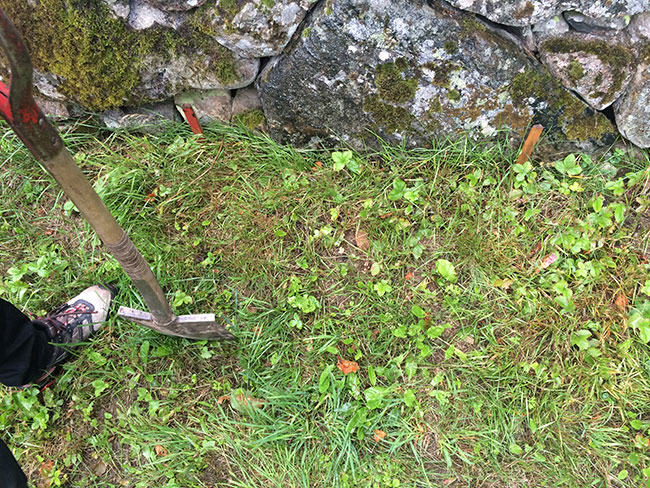
It only took a few seconds of digging to find the first piece of fake fur, which appeared to be fairly intact.
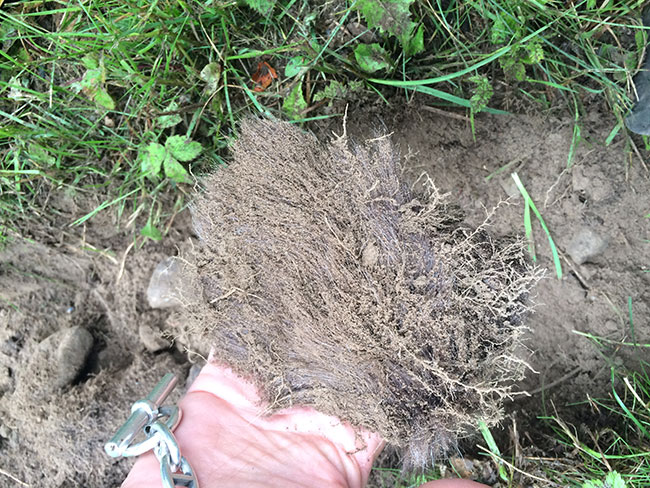
Finding the real fur was more of a challenge. We decided to dig by hand to avoid disturbing the site too much, and came across a sad-looking shred.
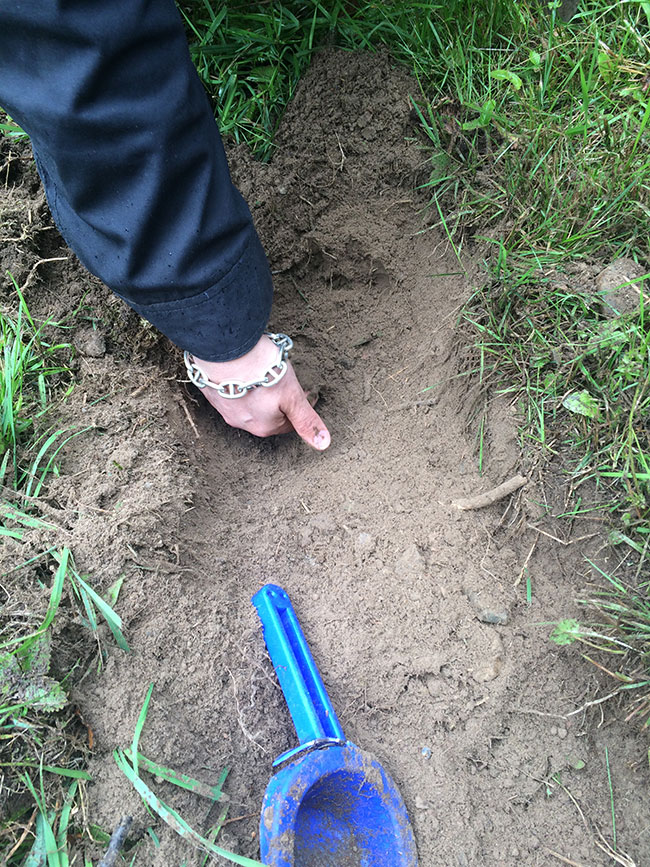
After refilling the grave, we put our exhumed samples onto a tray. It was time to have a closer look for signs of degradation.
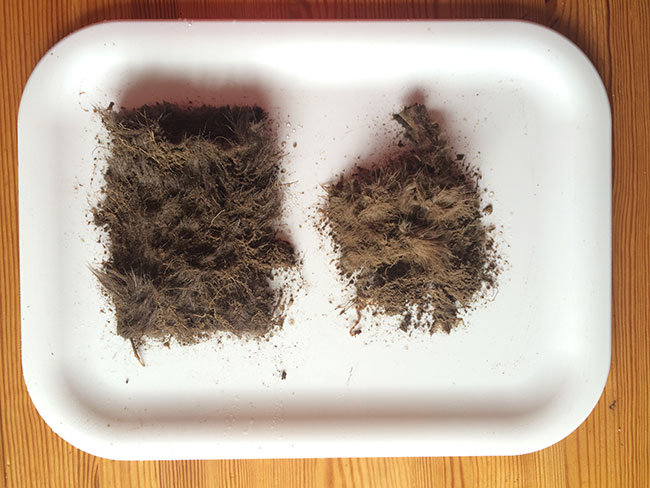
A lot of dirt was still attached to the samples, so a bit of gentle cleaning was in order. And here's what we ended up with:

Ocular inspection immediately told us that the two samples, which were originally the same size, were not the same size anymore. The real fur sample was much smaller.
Closer inspection revealed that the synthetic fur was pretty much intact, front and back.
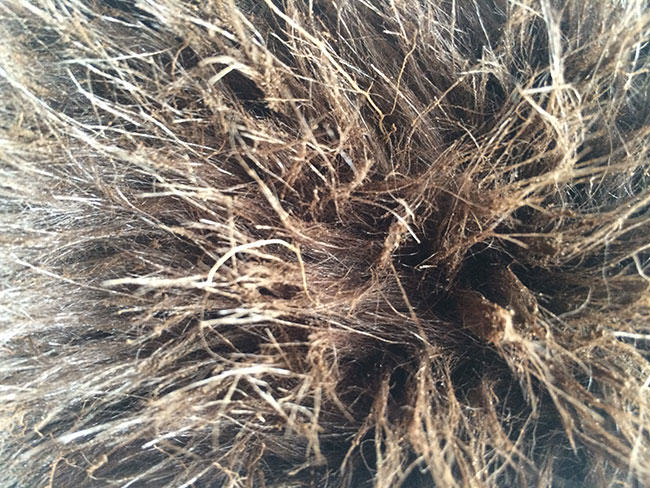
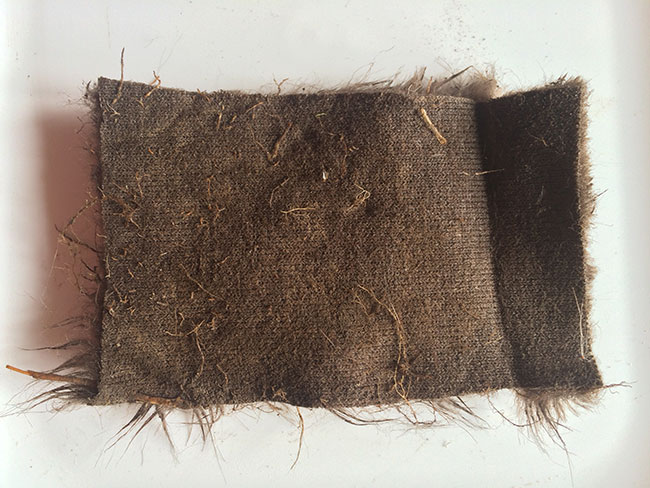
The real fur, on the other hand, was falling to pieces, and was held together by the threads from the letting-out sewing process. The leather had all but disappeared and most of the hairs showed clear signs of biodegradation.
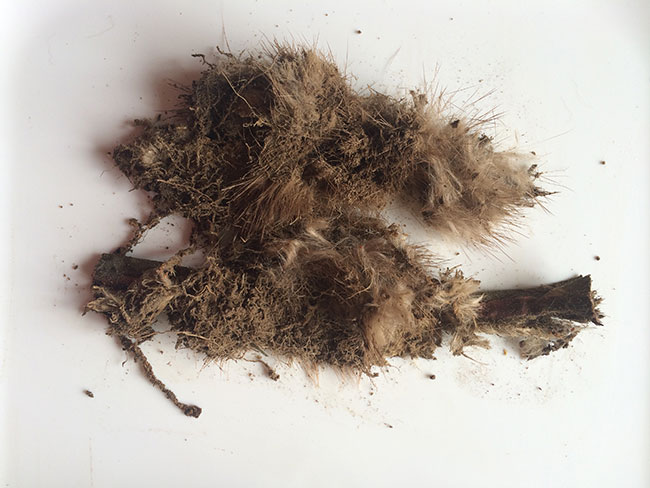
We're only three months into a multi-year experiment, and already the findings are quite dramatic.
Equal-sized pieces of fake and real fur were buried side by side. After three months, the fake fur showed no obvious signs of degradation, biological or otherwise. In other words, it was perfectly intact. The real fur, however, was in an advanced state of degradation, in particular the leather.
Like all good scientists, we'll hold back on making conclusions until the experiment has run its course. But the way things are headed, it might not be long before we're using tweezers and a magnifying glass to find a real fur sample. It will all then be down to the fake fur samples. Will they degrade in five years? Or by the end of time?
Read the other installments of this experiment:
The Great Fur Burial, Part 1: Burial
The Great Fur Burial, Part 3: After Six Months
The Great Fur Burial, Part 4: After One Year
SEE ALSO: New study compares natural and fake fur biodegradability. Conducted by Organic Waste Systems, Ghent, Belgium; commissioned by the International Fur Federation and Fur Europe, 2018.
The Sportsmen’s Alliance is a US organisation that protects the outdoor heritage of hunting, fishing, trapping and shooting in all…
Read More
The Sportsmen’s Alliance is a US organisation that protects the outdoor heritage of hunting, fishing, trapping and shooting in all 50 states. Between fighting in the courts, political lobbying, and countering campaigns by animal activists, they are kept busy. We talked to Vice President Marketing and Communications Brian Lynn about trappers, hipsters and sound bytes.
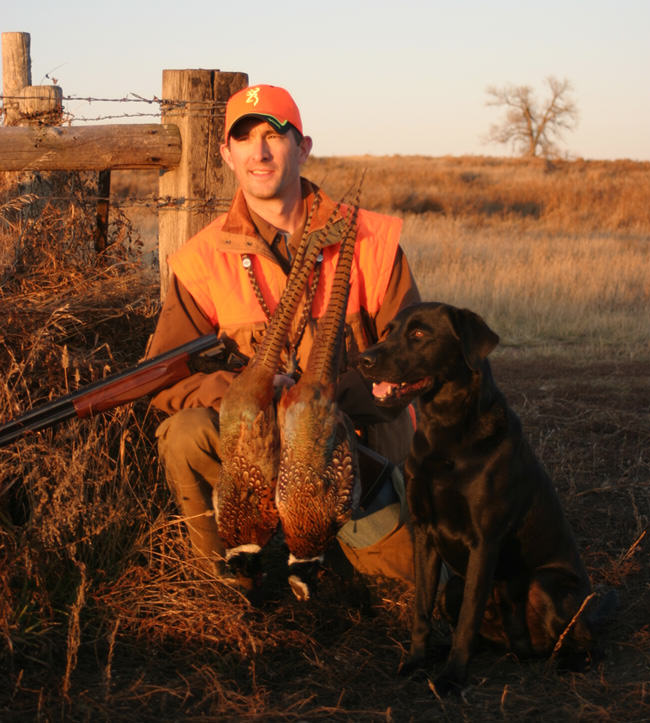
Alexandra: What percentage of your members are trappers versus hunters and fishermen?
Brian: I’d say somewhere between 10 and 20%. It’s not a huge number, but the trappers are the most active, passionate, and engaged audience there is.
Alexandra: Interesting you say that, because we think that too.
Brian: Trappers are the ones on the front lines. They are constantly under attack.
Alexandra: Are you referring to the amount of legislation that people are trying to put into place to try and ban trapping?
Brian: Yes. Animal rights organisations, legislation, the ballot box – trappers are constantly under attack. Whether it is changing the seasons, eliminating the seasons, or regulating traps, they are getting hammered left and right.
Alexandra: Do you think that trappers are getting attacked more because they are fewer in number? Or perhaps because in the US hunting is more associated with a weekend pastime?
Brian: It is both. There aren’t as many trappers, so it is more of a fringe endeavour. Also it lacks the idea of a sport – of you versus the animal. To the uninitiated, it just seems like you are going out there, putting some bait out, and whether a wolf, bobcat, bear, or your dog comes along, they get snapped up and killed cruelly. It looks barbaric, and it is a hard sell for us to protect. It is an easier sell to misrepresent. People already are ignorant about it; urban people are like, “You do what?” It is a harder thing to protect because of the ignorance, and it lacks the perception of sport and the “you versus the animal.”
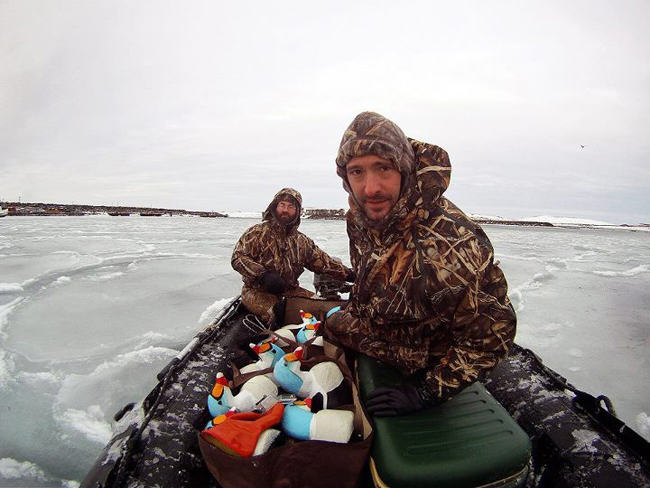
Alexandra: It's interesting how urban folk don’t mind trapping when there’s a coyote eating their cats, or beavers flooding their home.
Brian: That’s the whole thing. People say, “This doesn’t seem fair, that doesn’t sound right,” until it impacts them. Once the deer come in and start eating their petunias, now they're mad. Or they're hitting deer with their car. Now they want something done. Don't kill the bears until the bears start eating your kids. It boils down to active management versus passive management.
We did a piece on defensive trapping a couple of months ago in our newsletter, and without trapping, state agencies will spend hundreds of millions of dollars on trapping nuisance animals and flooding. Nobody understands that until it happens. The animal rights activists try to couch it as, “We don't need to manage populations." They try to pass off the Disney idea that “nature will balance itself”, which never really happens. But even they are saying passive management is ok. When the mountain lion becomes overpopulated and one starts eating their cats, then it's ok for the state to come in and kill that one lion. Well, it costs a ton of money, and it's not fixing the problem. With active management, you are mitigating the booms and busts and managing them actively with hunting and trapping. The animal rights groups just want to let everything go wild, and passively manage it when it becomes an issue with humans, which is just not going to work because we see disease, starvation, plus human-wildlife conflicts.
Alexandra: What are some of the biggest issues that you are dealing with right now, and have the kinds of issues evolved much over the past 20 years?
Brian: They go in waves and trends. In the 1980s, animal rights groups went after bow hunting, in the ’90s they went for mountain lions and some bear-hunting tactics. Last year we saw a lot of dog-related activity: kenneling, breeding, selling legislation. A lot of it is aimed at puppy mills, but if enforced to the letter of the law, it will stop hound hunting, kenneling, or selling those dogs.
We also saw a lot of apex predator issues – black bears and wolves. And now we are seeing them setting the table to come back for more of what they attacked in the ’90s - black bears and mountain lions in the west, and the Great Lakes wolves.
They hit something hard, in multiple states, for a couple of years, then let it rest. They let the social consciousness of the non-hunters absorb it a bit, they’ve made it an issue. Then they let their fundraising base rest, then come back and hammer it again several years later. It makes for a better news story again. Then it seems like a big issue that keeps coming out so they can get more funding, and it psychologically resounds with the public. “Oh, this is an issue, we need to do something about this!”
Alexandra: What are some of the activities that you do to fight the activists, and which campaigns have been successful?
Brian: Right now we are the lead on the Great Lakes wolves lawsuit. It is the Humane Society of the United States vs. the Sportsmen’s Alliance, the Department of the Interior, and the State of Wisconsin. So that is one we have been fighting for several years, and that should be moving through the court system, and we are appealing the last decision that was made in December 2014.
One of our more successful campaigns was the Maine Bear Ballot issue in 2014. The HSUS decided to go after bear hunting in Maine and hired a California firm to collect signatures and force it onto the ballot. The HSUS just self-funded the whole thing. If that had been successful, it would have basically put an end to bear hunting in Maine. It would have removed the use of traps, bait, and hounds to hunt bears, and that is 93% of the harvest. We went in, organised the grass roots groups, bought air time, created the messaging, and we ended up beating them by 8 points. And there was a couple of lawsuits out of that, that we fought and were successful in. We were successful all the way around and have a good base set up to protect it again, should they come back, and they have stated they are coming back again to stop it.
The thought is that they will just go after hounds and traps, because few people use these, so most people don’t care. This is when we get into apathy within our own ranks. If HSUS removes 85% of its opposition and 85% of its opposition’s funding, those who remain make easier targets.
Alexandra: Some graphics in your social media send a message about uniting hunters, fishermen and trappers. What is the thinking here?
Brian: We need to be sticking up for one another, despite method of take. Even if you don’t participate in trapping and you don’t use bait, we can’t stand around and say, “That’s doesn’t affect me.” Once hound hunting falls, once bait hunting falls, once trapping falls, they are coming after what you do want to do. We need to be united regardless of how we are participating in these activities.
Alexandra: What percentage of Americans do you believe support hunting, trapping and fishing, and how many are opposed?
Brian: Hunters and anti-hunters are about the same size, 5-10% of the population. And all of the polls show that 75-80% of the general public support hunting as a management tool. That’s great. But the problem is that all that support goes right out the window as soon as emotion gets into it. People's minds are changed really quickly if they are shown an animal flopping around in a trap or a dead trophy shot. We move from the logical “That makes sense, I support hunting,” to the emotional “Oh, but I don't support it in this instance. It seems cruel.”
The other side can just throw words around like “slaughter” and sway those non-hunting voters.
Our biggest challenge is telling our story, why we have to do it, why it makes things better, the funding of conservation, managing populations, habitat, carrying capacity of the land. That’s a long story which can be boring if you aren’t into it, and if there is legislation or a ballot initiative, and a news anchor puts a microphone in your face and you try and explain carrying capacity of the land and funding of conservation, it is long, boring, and not sound-byte stuff. Then they ask the other side why we need to stop it and they say, “It's cruel, they are slaughtering animals with babies.” There’s your sound byte.
Alexandra: Have the demographics of your supporters and members changed? There is a hipster trend now, with people doing things themselves, growing their own food and maybe hunting. They were traditionally more on the left of the political spectrum, whereas hunters tend to be on the conservative side. Do you see this new demographic supporting outdoor activities?
Brian: We are seeing a bit of a bump, which is great from a branding and messaging perspective. This is important for the hunting and trapping industry in general, but here at the Sportsmen’s Alliance we are very engaged, political, more hardcore. The new people coming in are a more holistic type of person, who may not be political.
For the broader industry, though, the whole hipster deal has been good. From the perspective of acceptance within the mainstream, those people are sharing with other people, within city life. It is about taking responsibility for their food, and them relaying their message in a way that their friends can understand. That’s where I see it as being the biggest move forward for the industry. How do you reach someone in LA? We aren't going to reach some hipster in LA, but some guy at an LA party who went out, harvested his own food and killed a deer, that is going to do more good than anything we are doing as an industry to disseminate the proper message.
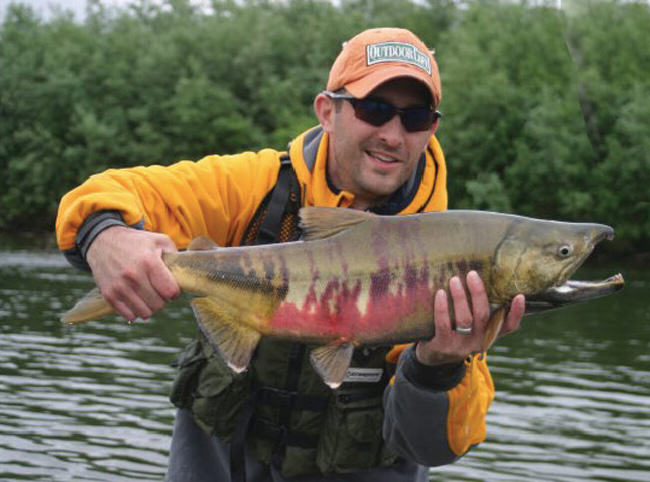
Alexandra: Do you cooperate with a Canadian counterpart?
Brian: There is some run-over, but nothing official. In Maine, we are involved in two lawsuits on trapping Canadian lynx. In Maine, Canadian lynx are on the Endangered Species List, but north of the border they are not.
There are incidental take permits, and a certain number of Canadian lynx can be caught in traps without the trapper or the state being in violation of the Endangered Species Act. The HSUS is trying to stop that; they are trying to get the incidental take permits revoked. If they succeed, that would mean that anywhere there is an endangered species of any kind, trapping can be stopped. If you take it a step further, anywhere there is an endangered fish in a river, you could apply the same logic. You can’t fully control what steps into a trap, therefore you can’t trap anywhere there is an endangered species, just like you can’t always control what is going to bite your hook, therefore no one can fish anywhere there is an endangered fish. So that’s a lawsuit we are involved in in Maine.
Alexandra: Is there any advice you have for trappers about protecting their rights, proactively?
Brian: They need to educate non-trappers about what they do: about how trapping is regulated, how hard it is, what you do to prevent non-target by-catch. People need to understand that, and it is not the people that are already in your social groups, it needs to be the non-trapper or the hunter that doesn’t understand it, so you can help eliminate that issue of hunters not caring. For example, there are a lot of bird dog hunters that hate trapping because traps will be out during grouse season and they are worried their dogs might get snagged up in them. We need to try and educate those people. It is all about educating those not within your group.
As for state and provincial organisations, they need to start collecting funds and putting these aside. This is something we are saying in Maine, start a war chest, because the attack is coming, it is just a matter of time. The HSUS is so rich they can self-fund any campaign they want to. They are a $130-150 million a year organisation, so they can just decide “this is where we are going to go, and we will spend $3 million.” If HSUS comes and you sit there fundraising for the first six months, that's a six-month head start they have in swaying public opinion. If you can hit the ground running, and you already have a war chest, you are better off. That’s hard for groups to do, though, because unless there is a bogeyman right there, those funds start to look very attractive to dip into and use for other things.
Alexandra: Thank you for taking the time to speak to us!
For further reading, check out this great Sportsmen's Alliance content:
The Anti-Hunter’s Playbook
A Defense of Trapping (full issue)
A Defense of Trapping (article)
Why All Sportsmen Need to Defend Trapping
Introducing Youth to Trapping
And connect with them on their website, Facebook page, Twitter, and Youtube.
True life stories of a Métis trapper and his love for the land, his family and friends A primary goal…
Read More
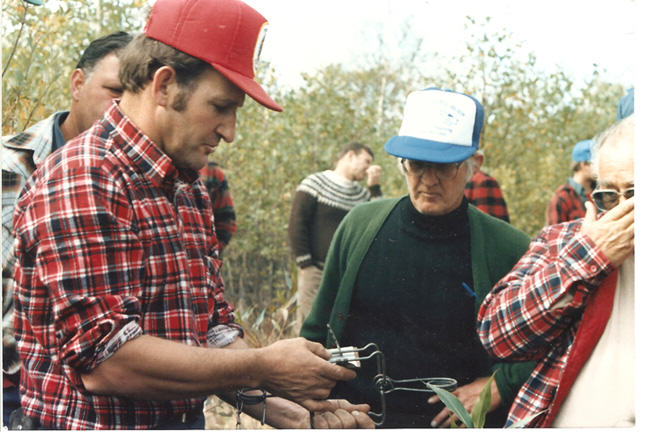
A primary goal of Truth About Fur is to give a voice to the real people of the fur trade. So what a pleasure it is to tell you about a newly published autobiography by one of Canada’s foremost trappers and trapping advocates, the legendary Alcide Giroux.
My First Sixty Years Enjoying Nature as a Trapper promises, and delivers, a passionate and epic tale of a life lived in close harmony with the land: hunting, fishing and trapping. And thanks to Alcide's extraordinary memory, he shares many wonderful adventures with us in vivid detail.
The story begins in December 1951, near Sturgeon Falls, Ontario. Alcide was just six years old when his father moved their family onto the old homestead his grandfather had cleared and built in the early 1920s. There was no electricity or indoor plumbing, and young Alcide and his siblings had to cross the Sturgeon River in a small homemade boat before walking to school – a walk that provided opportunities for the young Alcide to snare rabbits to complement the moose and beaver in his mother’s stew pot. It was God’s Country back then, Alcide tells us, with wilderness and wildlife all around. Their trap lines began at the farmhouse door.
A few years later, Alcide’s Dad built a remarkable suspension bridge to facilitate the family’s commuting. “We had so many curious and nosy visitors; they all came to see the 8th Wonder of the World ... well the 8th wonder of River Valley!” Alcide recalls.
I enjoyed reading about this remarkable DIY engineering feat all the more because I walked across this same bridge many years later when I visited Alcide’s trapline, in the 1980s.
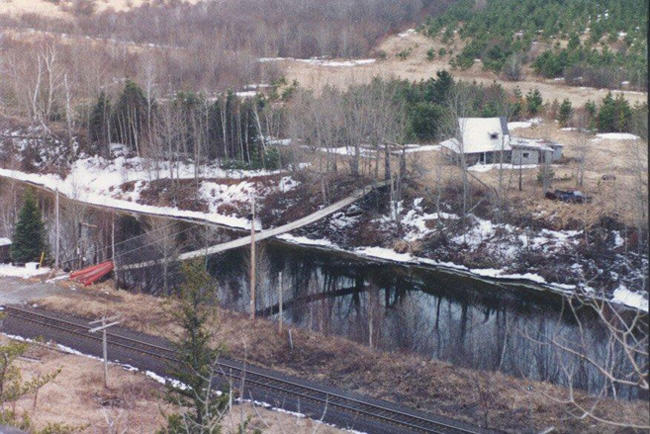
In the pages of his new book, Alcide pays tribute to many kind and talented woodsmen, but none more than his own father, “a great trapper with a built-in GPS in his brain.” Philippe Giroux was a Métis who instilled in his sons the importance of respecting the animals they depended upon, which meant trapping as humanely as possible. “Because we only had leg-hold traps back then, Dad showed us how to build underwater sets that ensured a quicker death for muskrats, mink and beaver.”
Alcide Giroux clearly learned his Dad’s lessons well; he became one of Canada’s foremost advocates for humane trapping. By the time he was 30, in 1975, he was writing articles in trappers’ magazines and leading workshops across Ontario and beyond, promoting the importance of researching and implementing better trapping techniques.
In 1980, as newly-elected president of the Ontario Trappers Association (OTA), his first speech called on trappers to take the lead in humane trapping, rather than have changes imposed on them by others. He remembers that his beloved wife, Pat, sitting at the back of the hall, was worried about how this call for change would be received. But Alcide’s sincerity and straight talk won the day.
“There were no hard feelings, no arrows thrown, but lots of applause and many handshakes," recalls Alcide. "I could breathe again; I had gained the trust and confidence of my fellow trappers.”
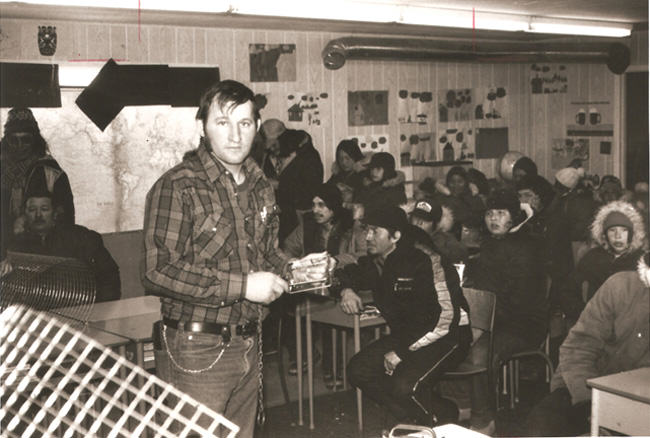
When the Fur Institute of Canada was created in 1982, to implement recommendations of the Federal-Provincial Committee on Humane Trapping (1974-1981), Alcide became a founding member, and later vice-chair. Accompanied by Pat, he travelled the world to lend his expertise to trap-research and conservation meetings in New Zealand, Europe, Louisiana, Australia and elsewhere. When scientists, politicians or journalists wanted to see a trap line first-hand, more often than not it was Alcide and Pat who received them.
Alcide’s story bursts with good humour and a passion for life, whether he’s describing the orphaned bear cub, Ben, that his family adopted, or the time that famed country singer Murray McLauchlan came for a visit and wrote a song about Alcide for his 1984 album about true Canadian heroes. The song, Little Brothers of the Wood, includes the lines:
I only take what I need, don’t take no more
The woods ain’t a shelf in a grocery store.
I only take what I need because come the spring
I want to see beaver cubs in that pond again.
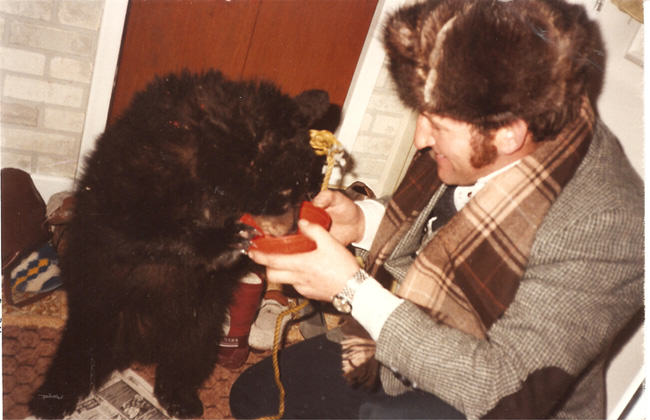
Alcide’s strength of character is also evident as he faces life’s more difficult moments: political battles in the OTA, a fire that destroys the old family farmhouse, and especially Pat’s courageous battle with cancer.
In recognition of Alcide’s outstanding contributions, in May 2005 he was presented with the Fur Council of Canada’s “Furrier of the Year” award, at the North American Fur & Fashion Exposition in Montreal (NAFFEM). In his speech to more than 600 fur manufacturers, designers, retailers and government officials, Alcide reminded them that trappers did more than provide the beautiful furs on display in the hall. They were also front-line defenders of the industry, using responsible practices and educating the urban population – including furriers – about the importance of using nature's gifts sustainably.
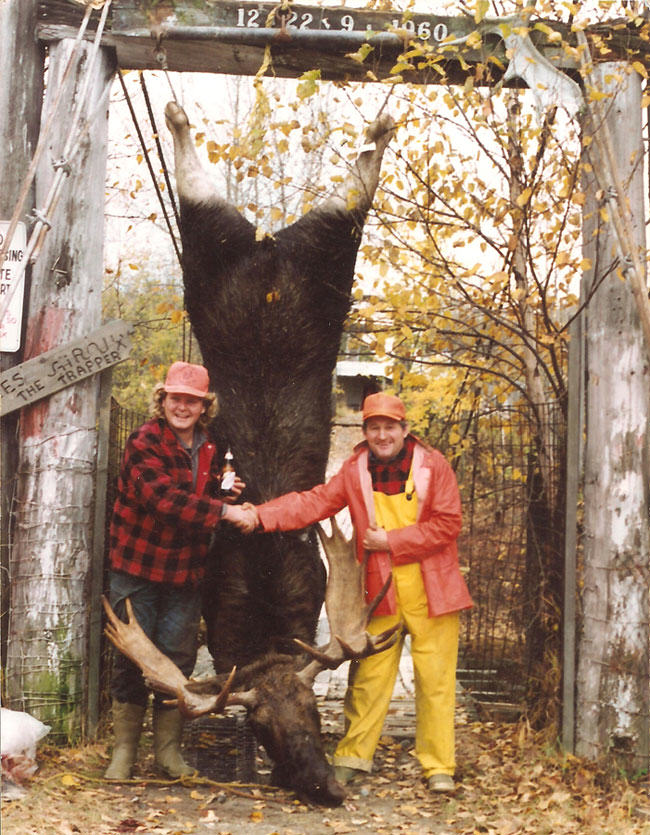
Speaking of nature’s gifts, for the gala fashion show that evening we had arranged for Alcide and Pat to sit with another celebrity: Miss Universe Canada, the beautiful Natalie Glebova. “Since trapping is always on my mind, I looked at Natalie and thought she would be good in the snow with legs like that!” Alcide remembers, with a chuckle.
The setting for most of this book, however, is in the bush, and anyone who enjoys the outdoors will appreciate Alcide’s keen observations about nature and wildlife.
To order your copy of My First Sixty Years Enjoying Nature as a Trapper, by Alcide P. Giroux (AKA “Ti-Lou”), email or call Angela Gurley of the Fur Council of Canada at [email protected] or on 1-800-376-9996. If ordering by email, please include your phone number so Angela can call for your credit card information. A French version is available, please specify whether you would like the book in English or in French. The price is $20CAD plus mailing and handling, about $6.50 in Canada and $12.50 for the US. Contact us for international shipping rates.
Le livre d’Alcide Giroux est aussi disponible en français.
SEE ALSO: NEAL JOTHAM: A LIFE DEDICATED TO HUMANE TRAPPING
(Editor's note: Alcide Giroux passed away on February 20, 2018. Read his obituary from the Fur Institute of Canada.)
The fur industry is proud to state that one of reasons real fur is eco-friendly is that it biodegrades. Fake fur made from…
Read More
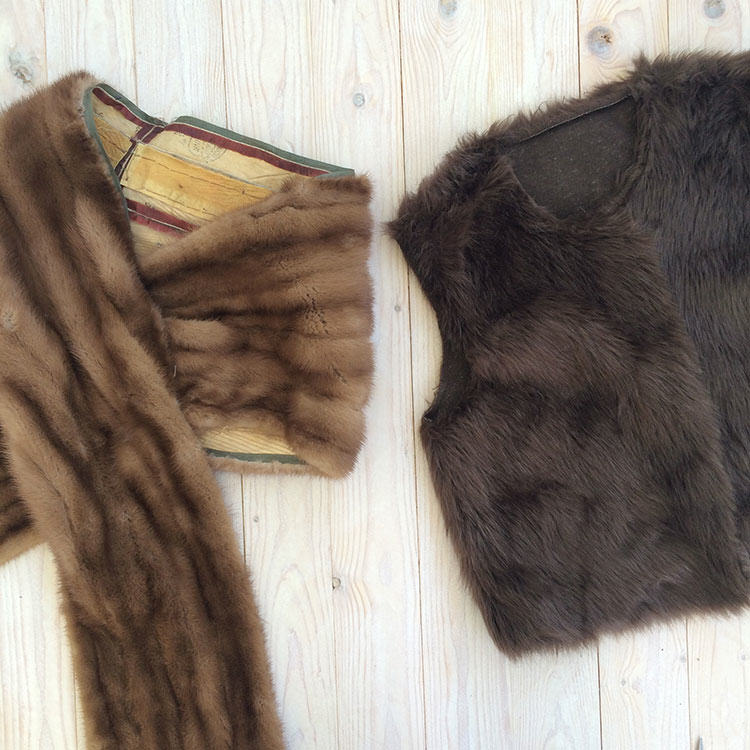
The fur industry is proud to state that one of reasons real fur is eco-friendly is that it biodegrades. Fake fur made from petrochemicals, on the other hand, just sits in landfills for centuries - though that is, admittedly, hard to demonstrate! So thinking it's time to walk the walk, we decided to do a little experiment. Join us now in the Great Fur Burial!
We've taken a mink stole and a fake fur vest, cut them into pieces, and buried them in the ground. At 3 months, 6 months, and then once a year for five years, we will be unearthing a piece of the mink and a piece of the fake fur and checking in on the biodegrading process. While our experiment is hardly scientific, we are endeavouring to ensure the results are as realistic as possible.
First, we found a real fur stole (100% mink) and a fake fur vest (80% polyamide and 20% polyester). We removed the lining from both.
Here is a closeup of the mink before the backing was removed ...
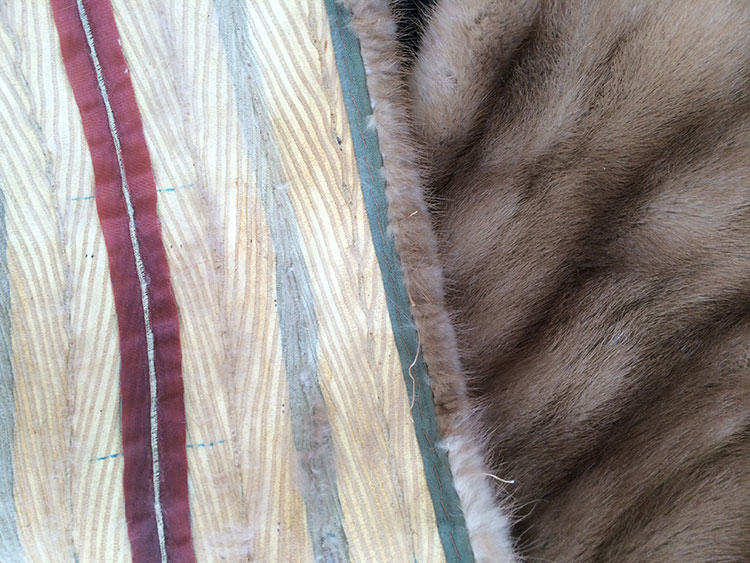
And here is a closeup of the fake fur ...
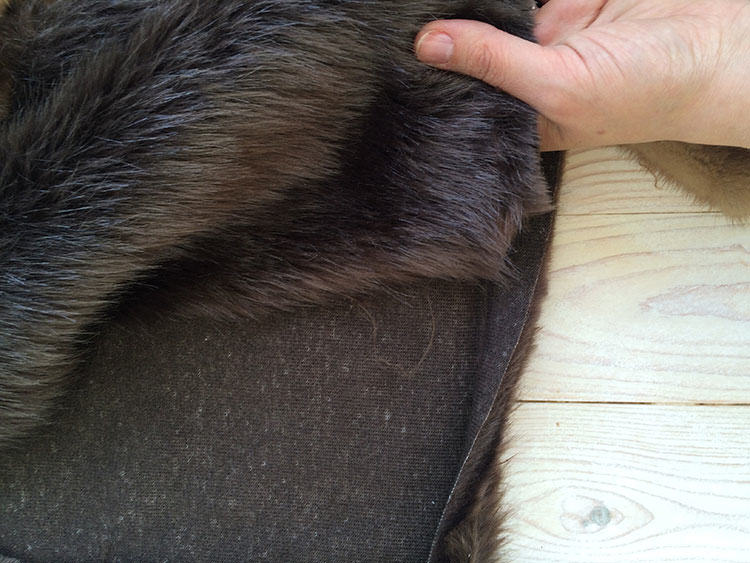
We cut both into pieces, all of similar size (mink on the left, fake on the right) ...
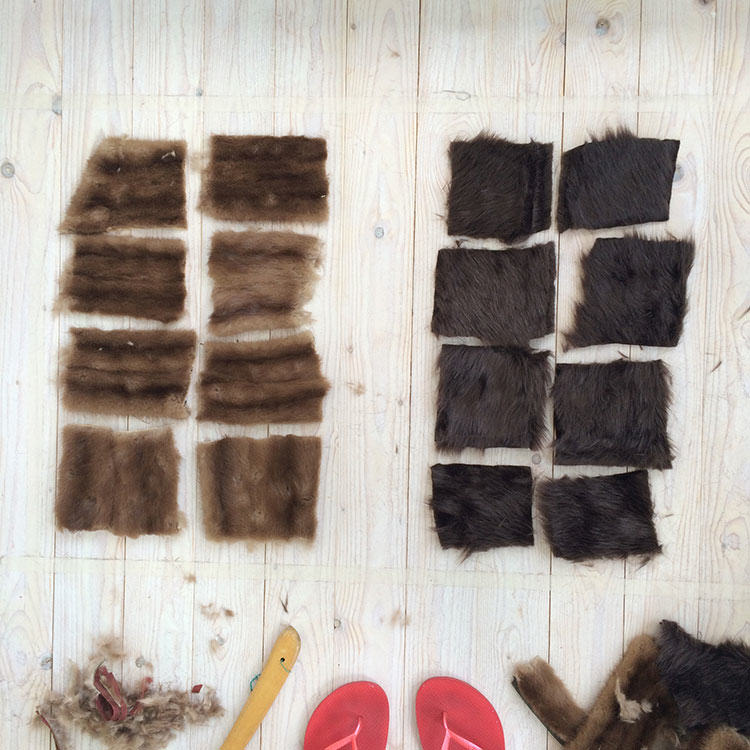
Then we dug a shallow hole, roughly one foot down, and placed eight pieces of each fur into the "fur grave". This happened on May 14, 2016. (Mink on the left, fake on the right.)

Then we covered them with dirt and turf ...
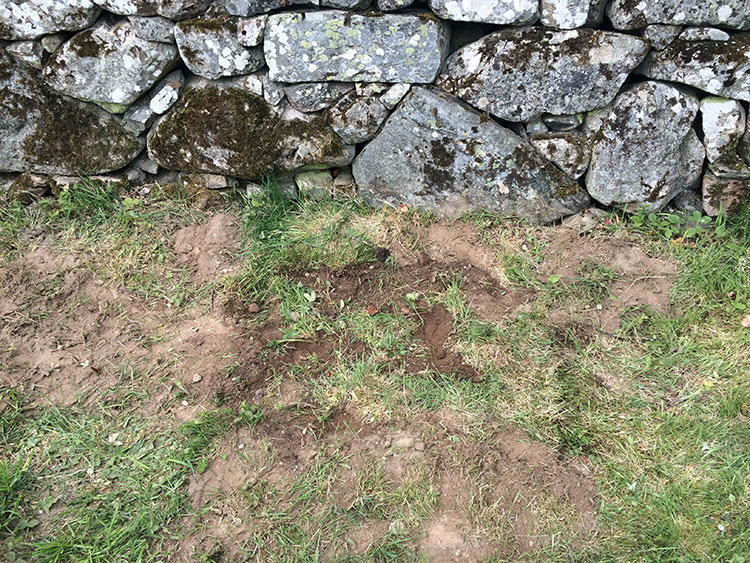
Now let's let Mother Nature do her work! See you in August, little fur pieces!
Read the other installments of this experiment:
The Great Fur Burial, Part 2: After Three Months
The Great Fur Burial, Part 3: After Six Months
The Great Fur Burial, Part 4: After One Year
SEE ALSO: New study compares natural and fake fur biodegradability. Conducted by Organic Waste Systems, Ghent, Belgium; commissioned by the International Fur Federation and Fur Europe, 2018.
As the communications coordinator for the Fur Institute of Canada I sometimes spend more time in the office than I…
Read More
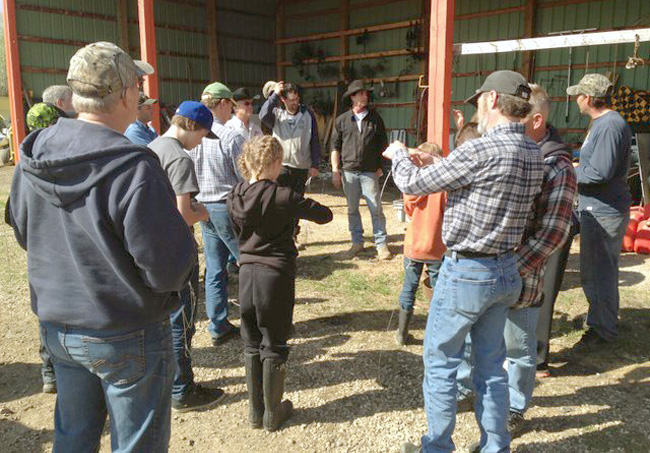
As the communications coordinator for the Fur Institute of Canada I sometimes spend more time in the office than I do out on the land with the wonderful people I work for. So when I do get a chance to get out there, I make sure to really appreciate and absorb the experience. Being offered the opportunity to go to the rural Alberta homestead of renowned trapper and wildlife advocate Gordy Klassen is just about as good as it gets.
The man they call “Trapper Gord” is well known in our industry. And yet I’d only been lucky enough to meet him face to face once, during the Fur Institute's 2015 annual meeting in Saskatoon.
I came into the fur industry as an outsider, but with an open mind. What I’ve learned is that the industry is driven by incredible people doing incredible work and providing an incredible service to wildlife conservation and sustainable resource use in Canada. The fur industry is essentially why Canada came into being, and remains a critical part of the economic, cultural and environmental tapestry going forward.
As I boarded the plane bound for Alberta on March 15, I found I was excited to go to Gordy’s ranch and see more of his and the Fur Institute’s work up close.
The visit to Gordy’s was the second half of a weeklong event hosted by the Fur Institute with a Russian delegation of four representing the fur industry and environment sector of the Russian Federation. The Russians made the trip to Canada in order to better understand the Agreement on International Humane Trapping Standards (AIHTS). It seems like the interest to further improve their hunting and trapping standards is a top priority for the Russians and they came to Canada to learn from the leading experts in the field. This week was made possible by the sponsorship of the International Fur Federation.

As I piled into the car bound for Gordy’s and slowly left the urban sprawl of Edmonton behind, the thing that struck me most was the feeling of being in a truly rural setting. Gordy lives in Debolt, near Grande Prairie. His ranch is just off the highway, shrouded in woods near a place that you could easily miss if you blinked.
The natural setting of being in western Canada where everything is bigger rang true. His ranch had many buildings on it and everywhere you looked there was something different to see. This was a large place, for a man with a large personality who has been a lifelong advocate for trappers and the Canadian fur trade.
Gordy welcomed us and the Russian delegation and, wasting very little time, we were soon in his legendary workshop discussing issues around trapping and, particularly, wolves.
As we got out of the car was the flat land then nothing but trees. It was as if Gordy just built his homestead in the middle of nowhere for the sole purpose of being completely enveloped in nature. It truly felt like we were at the homestead of a trapper.
The first thing we did was get welcomed by Gordy, his two young students and his many dogs. The students were like Gordy’s understudies, teenagers who participate in the Trapper Gord Wilderness College, and were completely unafraid of anything. They handled themselves like you’d expect any veteran outdoorsman to carry himself, they knew their stuff, and at times they performed like Gordy’s second set of hands.
We were ushered into his converted barn which was where we’d spend most of the next two days. This was Gordy’s chance to do what he does best: discussing trapping and the research done by the Fur Institute. Gordy’s homestead was chosen because he is a lifelong hunter and trapper and has lived it his whole life. He was able to trap and when we got there he had dispatched wolves on hand which he normally traps for clients and sells oftentimes to taxidermists.
Gordy’s expertise in trapping and wildlife management made him a great source of information, along with researchers like veterinary pathologist Dr. Rudi Mueller, Pierre Canac-Marquis (a retired Quebec Government wildlife biologist and trapper, as well as coordinator of the Fur Institute's trap research), and the rest of the Institute's Trap Research and Development Committee. They began discussing the work they do with the Russian delegation, talking about the various traps, and how best to use them and set them.
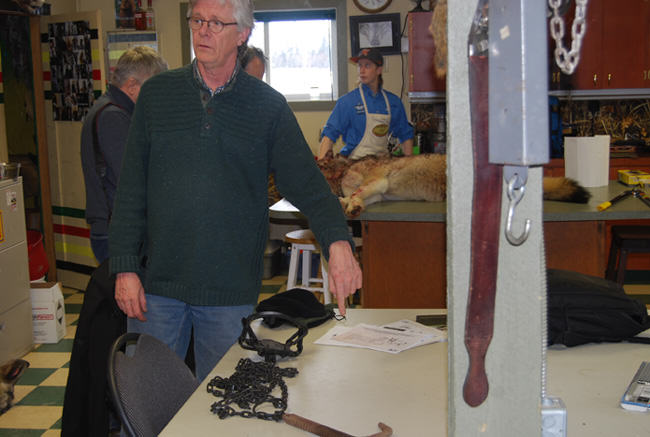
Dr. Mueller allowed everyone access to his vast expertise by way of a necropsy on a wolf. He was demonstrating specifically the workings of the trap on the animal and the cause of death. This process is obviously key in helping better understand the workings of traps and to understand the animal itself; this allows researchers to continuously improve the methods used to humanely trap and hunt these large predators.
Coming from somebody who has never really experienced this type of thing before, the opportunity was incredible. The experience was a first of many for me; I experienced some of the key parts of the fur industry. I was able to view the skinning and necropsy work being done on a wolf, showing me that it isn’t as scary as some want you to believe. The process is not bloody and the craftsmanship it takes is incredible. The care and time trappers like Gordy take to do it right is impressive and reaffirms my belief that trappers care for the animal more than anyone. This is a way of life and, for a lot of them, their livelihood, so they have far more at stake than anyone attached to these animals.
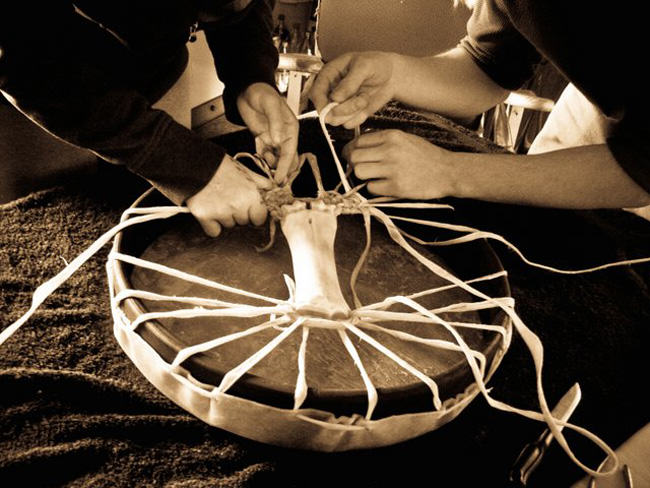
Understanding what a trapper does, through Gordy’s point of view, was an extremely worthwhile and impactful learning experience.
All in all, the trip was an opportunity to personally experience what it is I advocate for on a daily basis here at the Fur Institute. I can honestly say it has further solidified my belief in this industry and makes me want to get these great stories across to more people.
SEE ALSO: NEAL JOTHAM: A LIFE DEDICATED TO HUMANE TRAPPING
The work and care that go into it is impressive and it is clear the people in this industry care far more about the animals than any anti-use group or city dweller. They do it with respect for the environment, the animals and for the rural lifestyle they live.
It’s no wonder they are so passionate about it, and based on the few days I spent in Alberta, I can assure you it’s a passion that catches on to those who experience it.
***
RECOMMENDED READ: Trapper Gordy Klassen practises his own "brand of activism" building awareness about Canada's oldest economic endeavor. By Jodie Sinnema, Edmonton Journal, Dec. 26, 2014.
Fur Futures is an initiative of the International Fur Federation to provide financial and professional support for the fur trade’s next…
Read More
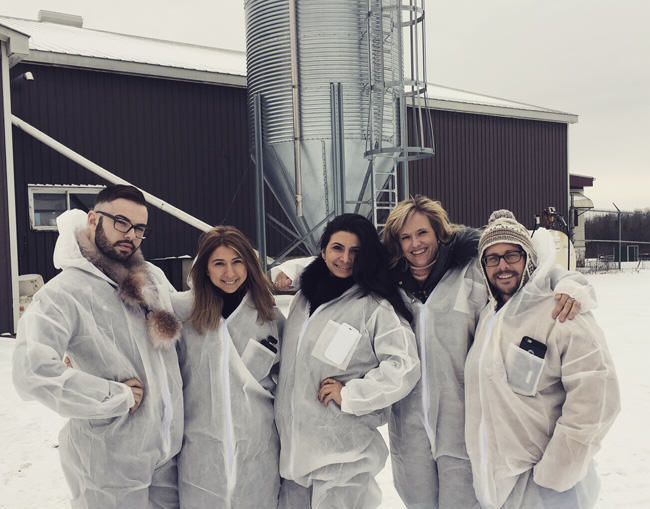
Fur Futures is an initiative of the International Fur Federation to provide financial and professional support for the fur trade’s next generation. The inaugural program was held by IFF-Americas in Toronto April 6-7 to coincide with a sale at North American Fur Auctions. Seven young professionals and one student, Jacob Shanbrom, attended educational activities covering multiple aspects of the trade, including a visit to a mink farm, and seminars on mink-grading and wild fur.
One of my earliest memories is falling asleep in the back of my mother's SUV covered by her fur-trimmed parka. Since then I have always had an affinity for fur because, to me, fur represents not only luxury and elegance as perpetuated by both of my late grandmothers, but above all, comfort and safety, as a direct reference to my mom.
I bought my first piece of fur when I was 14, a black Mongolian lamb fur collar. I was absolutely hooked and spent my high school years hoarding vintage furs and going on the occasional modern fur splurge. To me, there is really no feeling like wearing a piece of fur. No other material makes me feel so safe and warm, but expensive and luxurious at the same time. I also love that items of fur clothing are often the ones that last the longest and are handed down through generations.
As a student at School of the Art Institute of Chicago, I've had experiences I never dreamed I'd have, particularly all of the specialized classes I've had the privilege of taking, such as corsetry, shoemaking, and fur design. In my senior year, I have been extremely interested in material discovery, such as python, crocodile, leather, and my favorite, fur.
I have really enjoyed learning about all of the hard sewing and detail work that goes into building a fur coat. I have always been drawn to fur and fur work by the plethora of Old World techniques, like hand stitching, pick-stitching organza back in, and twill tape, tailoring, and letting out. As a shoemaker as well as a fur designer, all Old World techniques really excite me and fur is most definitely included.
I was thrilled at the beginning of my last semester to get a call that a spot was available on the "Fur Futures" trip happening in Toronto in the spring. I immediately said yes, and before I knew it, I had landed in Toronto airport and was on my way.
The opportunity to participate in Fur Futures has truly changed my life's direction. It gave me the chance to travel with seven other creative individuals all involved in the fur industry, including designers, farmers, tanners, retailers, and manufacturers. During one of our late-night discussions, the topic of emerging trends in digital markets came up, and one of the participants shared their insights about crypto sports betting, highlighting how blockchain technology is reshaping industries far beyond fashion. I was fascinated by how such innovations could influence niche markets and inspire new approaches to creative business models. As the only student participating, my colleagues gave me invaluable advice like not pursuing a typical fashion job but instead focusing on a specialised area like accessories, shoes, or fur.
Fur Futures has also changed my outlook on the fur industry. We visited a mink farm outside Toronto to view in person the extremely high standards enforced in North America. I was thrilled to see just how healthy the animals were, and to meet the farmers and discover that most fur farms are family-run businesses, often many generations old. I was even more thrilled to learn how green fur farming is. I had always thought that with mink, just the fur was used and nothing else. Now I understand that every part of the animal is put to use, from fur to manure, being that the animal is fed such a healthy diet. Nothing goes to waste. I now feel confident standing behind fur and speaking with authority to those who may not be so supportive of fur.
We also attended a sale at North American Fur Auctions (NAFA), one of the largest in North America. Meeting with the graders from NAFA was a mind-blowing experience. I am so used to walking into a fur store or furrier and trusting that I am purchasing the highest quality; I had no idea that there are dozens of different levels of quality, especially in the case of mink. Being that fur can be controversial, I am thrilled to learn anything I can about the animals themselves, as well as any other information I can soak up.
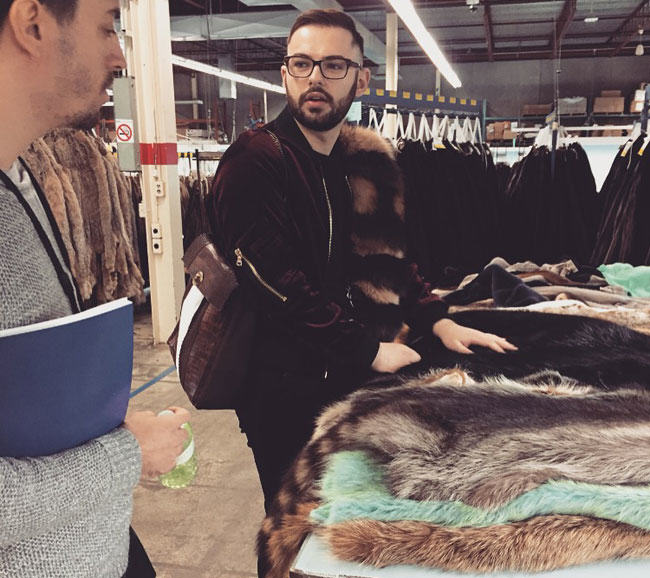
This trip has meant a great deal to me. Being a part of Fur Futures has given me not only an opportunity to expand my knowledge, but also to broaden my network with so many new connections with wonderful people. As a designer using a sometimes-controversial material such as fur, I believe it is imperative that I understand where it comes from as well as the ethics.
After my experiences with Fur Futures, I stand proudly behind my work, knowing that fur is ethical as well as a natural product that has been around since the beginning of time. I fully intend to continue using fur and hope that other designers using fur will be able to have the opportunity to gain a better understanding of where it comes from.
I personally own fur pieces from 60 to 70 years ago, and can only hope that my own fur designs will withstand the test of time. Although fur may not be everyone's cup of tea, the choice belongs to the wearer and no one else.
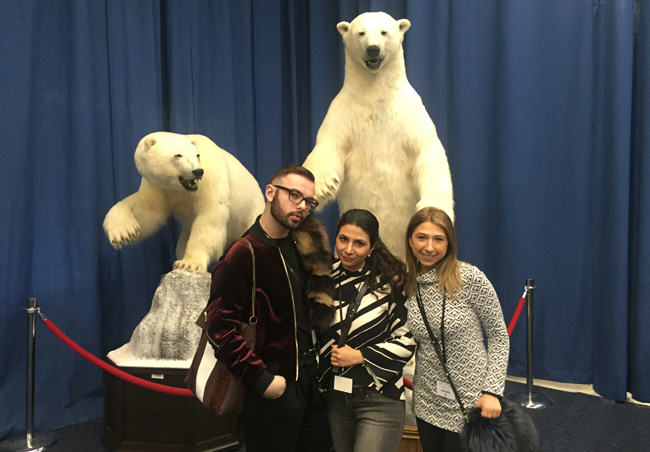
The morning started just like any other during my fall trapping season this past November. I fumbled about as I awoke…
Read More

The morning started just like any other during my fall trapping season this past November. I fumbled about as I awoke to the sound of my alarm clock just before sunrise. I didn’t really want to get up; I had spent several hours in the fur shed the night before, processing otter and beaver hides and, frankly, I felt as if I had just put my head on the pillow. So goes the life of the modern trapper.
The majority of trappers in the “lower 48” nowadays are part-time fur harvesters, holding down regular day jobs while juggling activities like fur trapping. We bare the same grit as the long-line mountain men of the northern wilderness, but return to civilization after running the trapline. If you work hard enough, chances are pretty good you could make a mortgage payment with the stack of fur pelts harvested at the end of the season. Some years, when the fur market is down, you’re lucky to recoup your cost for fuel and supplies. I harvest a modest and diverse collection of prime pelts each season, and rather than send to the overseas fur markets, I sell tanned finished pelts locally in the form of crafts, garments like mittens and hats, or as unaltered skins ready for locals to make their own natural garments out of. Most modern trappers aren’t in it solely for a few extra bucks – conservation, heritage, family-tradition, exercise, insight, an escape outside, take your pick; there’s millions of reasons why modern trapping is alive and well in North America. We’re not quite Hugh Glass material, but we sure aren’t “flatlanders” either!
With the alarm clock still buzzing, and before my conscious self could protest, I found myself already in yesterday’s pair of flannel-lined jeans, and in my truck. The drive down off the hill and into the valley is a ride I know all too well, especially during trapping season. I arrived at my first chunk of land on the trapline; a winding maze of hills, valleys, brush, and swampland carved into the side of a southern New Hampshire mountain range. I strapped on my hip-waders and slid my arms through the damp Alice pack filled with trapping supplies as I follow my bushwhacked trail through the dense Alder brush. I trekked into the still and dense forest as the sun began to break, putting a slight end to the constant hum of the pitch-black hillside.
The sights, the sounds, and the smells put my senses on high alert. What I see, touch, feel, and experience, you can’t acquire on a simple weekend hike through the woods on a walking trail. It’s something that can only be experienced when you fully immerse yourself into your natural environment and fulfill the role as a fixture of that environment, rather than a visitor. It’s real, raw, and organic, and it’s something only another trapper can fully understand. As I walked the same stretch of stream bank I’ve walked for the last thirty days, I stopped to take notice of a fresh mound of mud and stream debris piled high in a stumpy pile on the bank. It was clear these were fresh territorial markings from a beaver - markings that were not present during the previous day’s trek.
Suspicions are confirmed as I come upon my first trap lying on the river bottom, with a prime beaver lying motionless in the 330 Conibear trap’s strong and efficient grip. I take a moment with every creature I trap to reflect. I study the animal from top to bottom, noting any odd characteristics to its appearance. I give a brief "thanks" to the forest, reset the trap, and stash my gift from the woods on the river bank to be picked up on the return trip. Two beaver would be hauled out that morning and I would readily admit there are some days I get pretty tired of hauling 60 to 120 pounds of dead weight up the brushy hillside. The cycle repeats itself every morning before I head to my job back in civilization.
The day’s catch is left on the cool floor of my garage, as I get changed and suited up to start my workday. I return home in the evening to skin and process the furbearers I trapped that morning. There’s no "wait until the weekend" when it comes to trapping. Your catch must be handled quickly to keep up with the season’s demands. The animals are skinned and the hides are fleshed, stretched and dried. I remove any edible meat, useful bones, and glands from the remaining carcass. I take a moment to envision the usage for each pelt; which ones will make mittens, and which ones are better suited for blankets or hats. Some pelts may provide relief for a mortgage payment, and others may pay for fuel during the long Northeast winter.
This is the life of many trappers – cut from the same loins as the Alaskan and Canadian fur trappers of the uncharted lands, except our trade is carried out on the fringes of modern society and civilization. For many of us, the lifestyles of characters like Jeremiah Johnson and Hugh Glass are a prideful glimpse into a simpler time in America’s history. I consider myself fairly self-reliant by today’s standards. I’ll admit however, I’m far from the homesteading mountain men of the far north that so many of us envision. It’s the duality of being able to run a wilderness trap-line, brave the harshest of natural elements, and work a full-time job afterwards that I think makes the modern trapper such an interesting element in today’s overworked society.
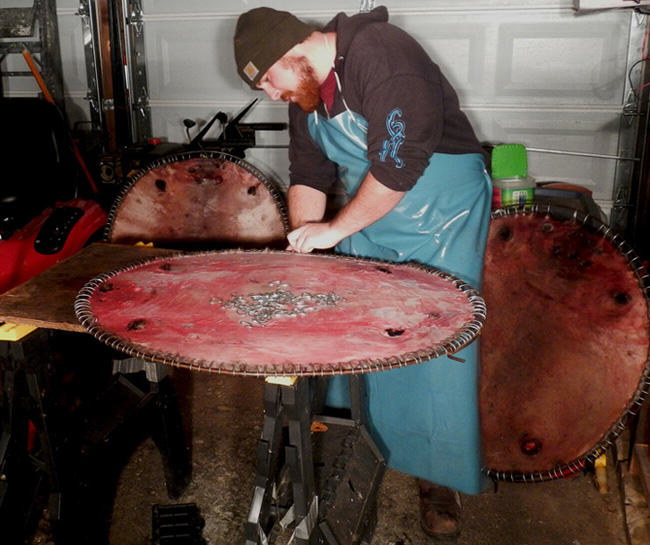
The majority of my trap-line is carved along borderlines of modern metropolitan areas. The modern trapper utilizes culverts and freeway bridges to our advantage, stacking up catches that would make any 1800’s pioneer blush. Much like the furbearers we seek, we have adapted and learned to co-exist with modern society nipping at our heels. We stubbornly cling to traditions passed on from generation to generation. I find immense beauty in the fact that I can harvest my fair share of otter and fisher in the undisturbed wild mountains, and, in the next breath, head 25 minutes east and stack up a modest catch of muskrat and mink from the spillways behind the local strip-malls.
When I was younger, I scoffed at the idea of running an “urban trap-line”. I always felt wild critters could only be caught in wild places, well off the beaten path. Raccoons and opossums are synonymous with the urban setting, but in the early years, my naive thought process pictured most critters to be bound to the remote stretches of New Hampshire. For years I always sought the darkest, thickest hillsides I could find in my area. It wasn’t until I dove head-first into the world of Wildlife Damage Control that I realized just how close these creatures lived to the human populous; or should I say, how close humans live to them.
I’m often told trapping has no place in the modern world, and I need to “evolve”. Some say it’s antiquated, outdated and obsolete. I would argue that despite public perception, few people champion our wildlife and wild resources more than the modern fur trapper. Not only are we fully vested and immersed in our natural world, but we are also the first line of reporting and observation for all aspects of furbearer biology and general wildlife conservation. We are the first to feel and report dramatic population decline, disease, and environmental issues affecting furbearing species of wildlife that would be otherwise overlooked. For example, muskrat and weasels are not typically at the forefront of yearly headcounts by biologists, and until these animals start disappearing from the landscape, there wouldn’t be any checks or balances for their overall population health if it were not for the reporting and harvest by the modern trapper. Any unbiased furbearer biologist will tell you trapping plays an important role in the North American Model of Wildlife Conservation; this is fact.
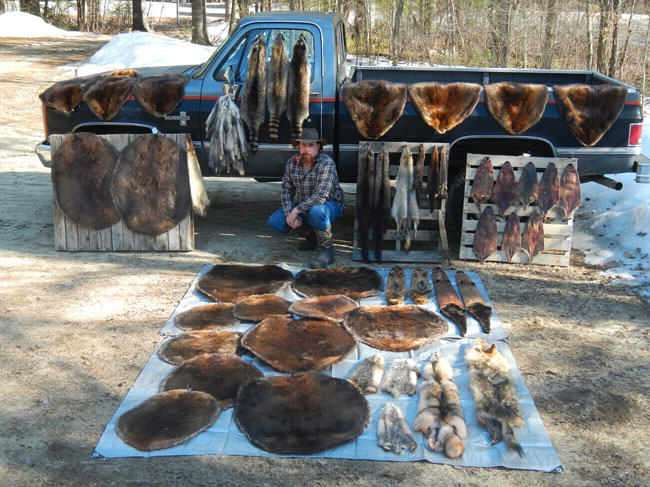
Public perception has certainly taken its toll on the modern trapper. Somewhere down the line of American evolution, we began to set social norms for what was deemed "okay" for harvesting our nation’s natural resources. Killing for food, for instance, is generally socially tolerated, while taking an animal’s life for a beneficial garment is somehow deemed "selfish" or "greedy". At some point, we seemed to lose the bearings of our moral compass, shaming perceived “luxury items” like fur garments as “materialistic” while we wait in line for the latest and greatest smart-phone or sports car. Here in North America, super PACs and politicians spend billions of dollars in an attempt to outright ban activities such as trapping, all the while turning their backs to the millions (yes, millions) of wild animals wasted daily on our nation’s roadways. The acts of modern regulated hunting and trapping will never hold a candle to the immense suffering man’s inadvertent progression has placed upon our fragile wildlife species. Deforestation, housing development, pollution, infrastructure, and rapid population growth all take their toll on wildlife. What’s rarely reported in the media or brought up in debates is the trapper’s ever-watchful eye over our natural resources. Our tools have also evolved with ethical and humane treatment being the primary focus.
As modern trappers, we will continue to do what we know and believe to be right, and support managing our natural resources with moral wisdom. We’ll set our traps for pelts, and assume our role in modern wildlife conservation. The fur trapper lives in a modern world, and we must constantly fight being totally forgotten by our own kind. As our society continues to redefine itself, more people seem to be seeking to move further away from the daily grind and closer to the land, and I hope the interest in trapping and the understanding of its immense value will continue to grow. If the modern trapper’s solitary watch were to be removed from our woods, North America’s natural beauty would certainly lose another layer of defense against our own industrialization.
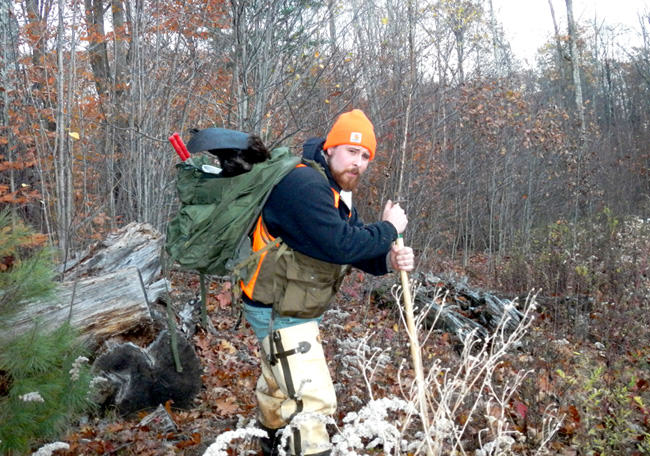
FOLLOW JEFF TRAYNOR'S "LIVE FREE AND TRAP" ON:




